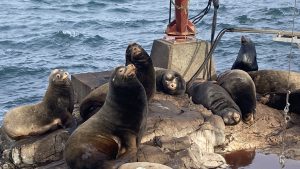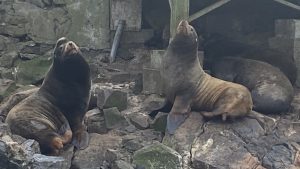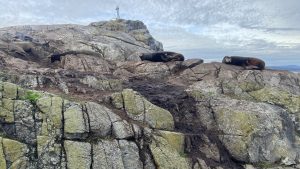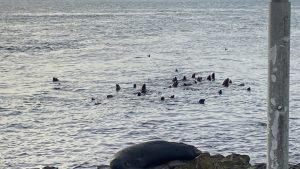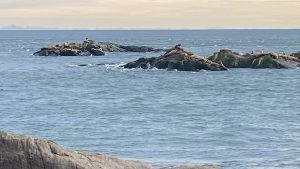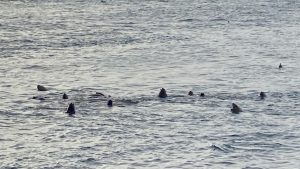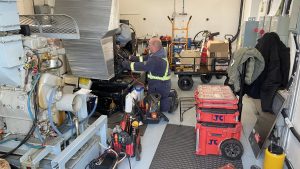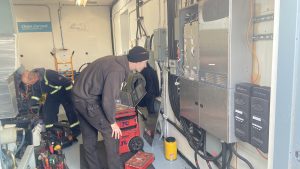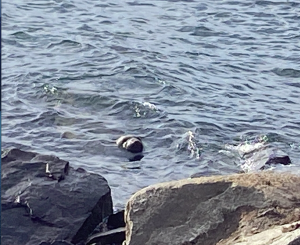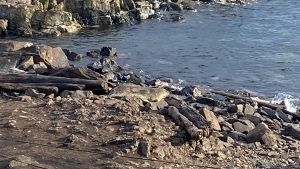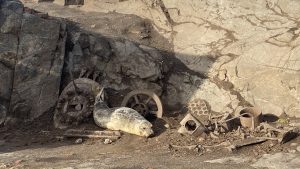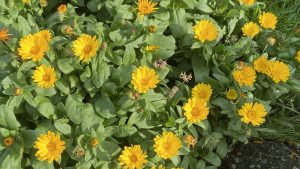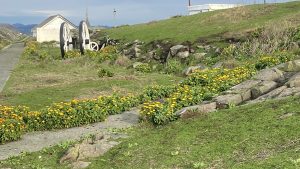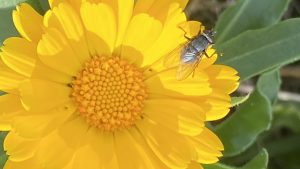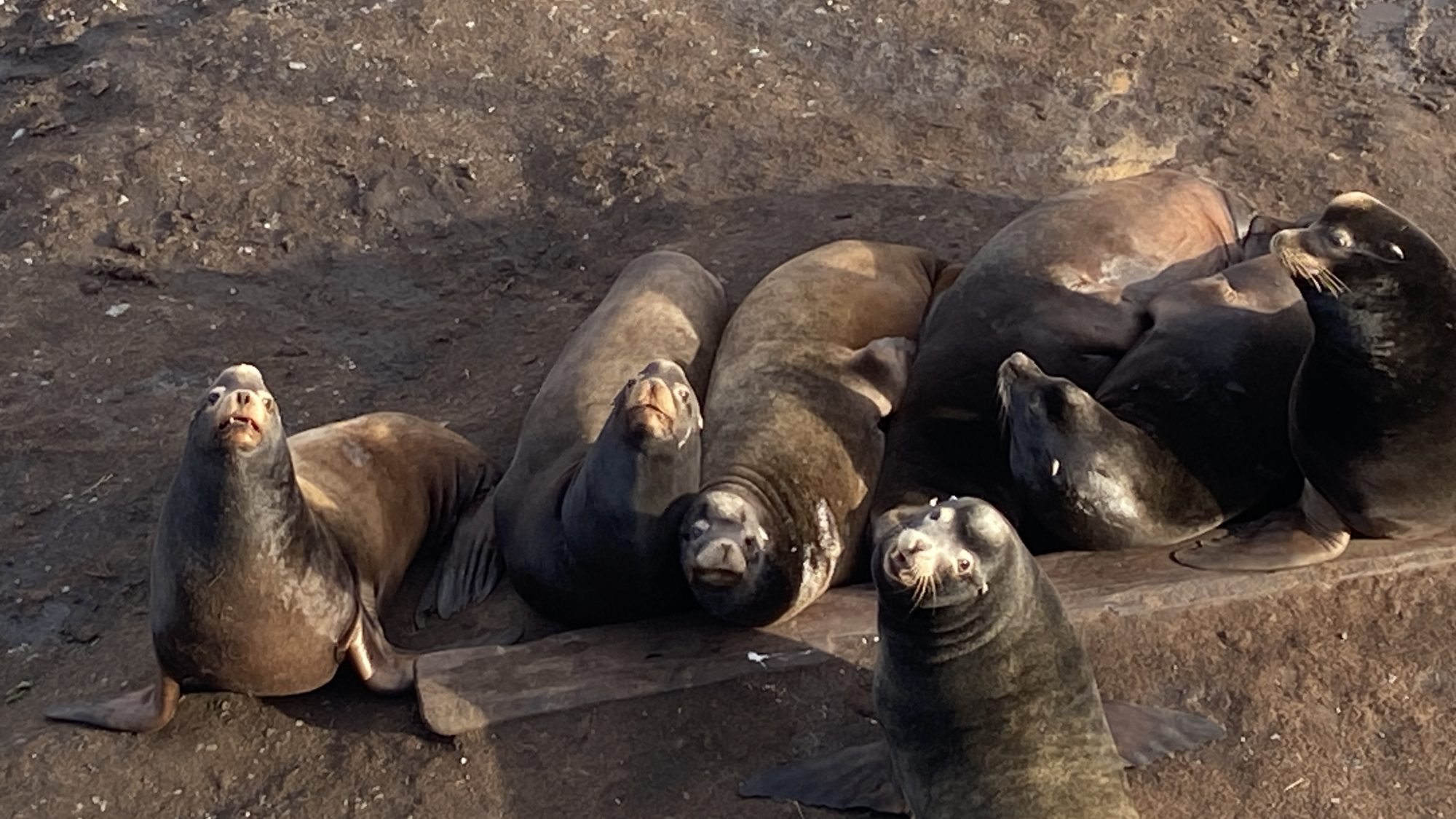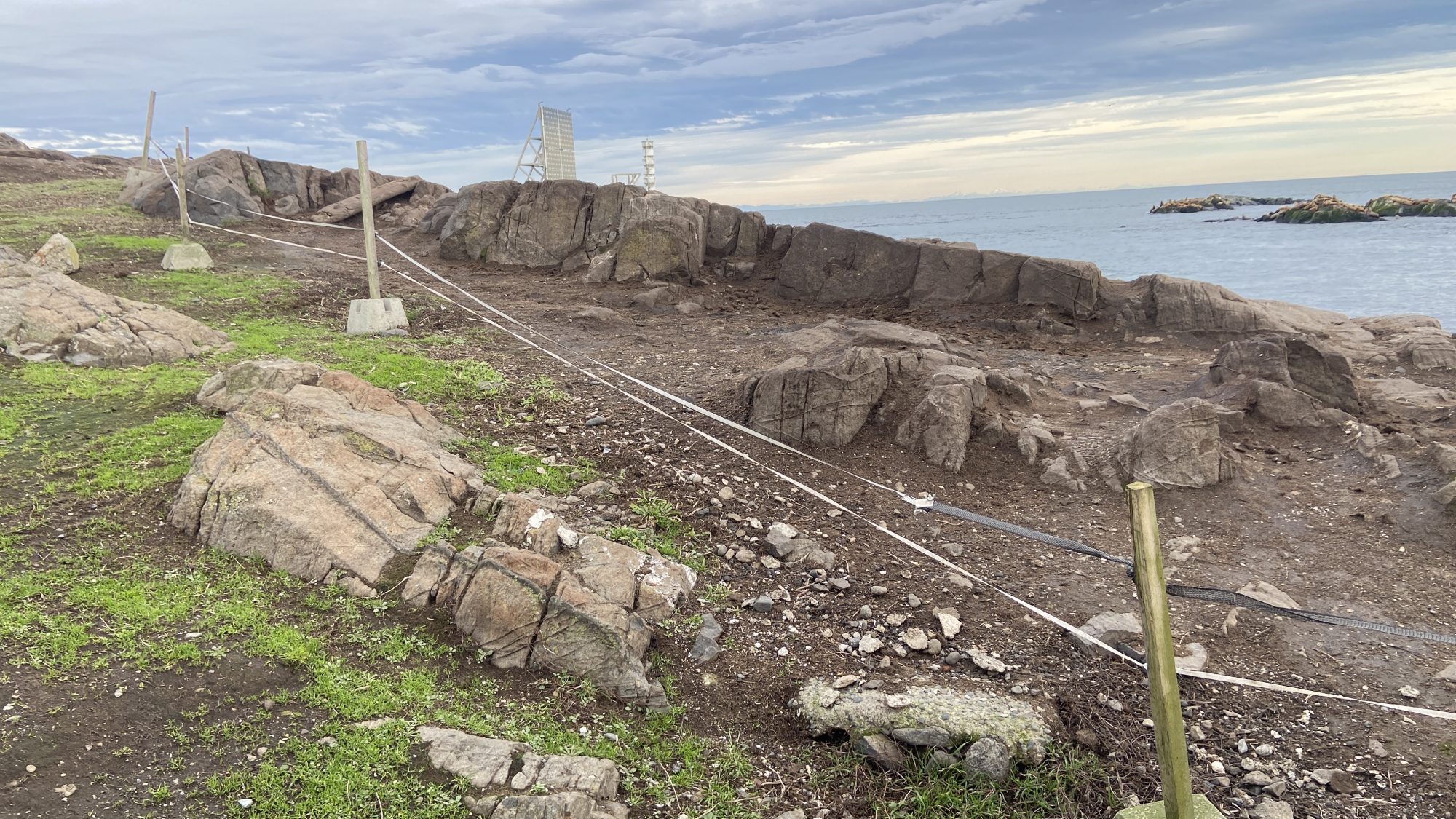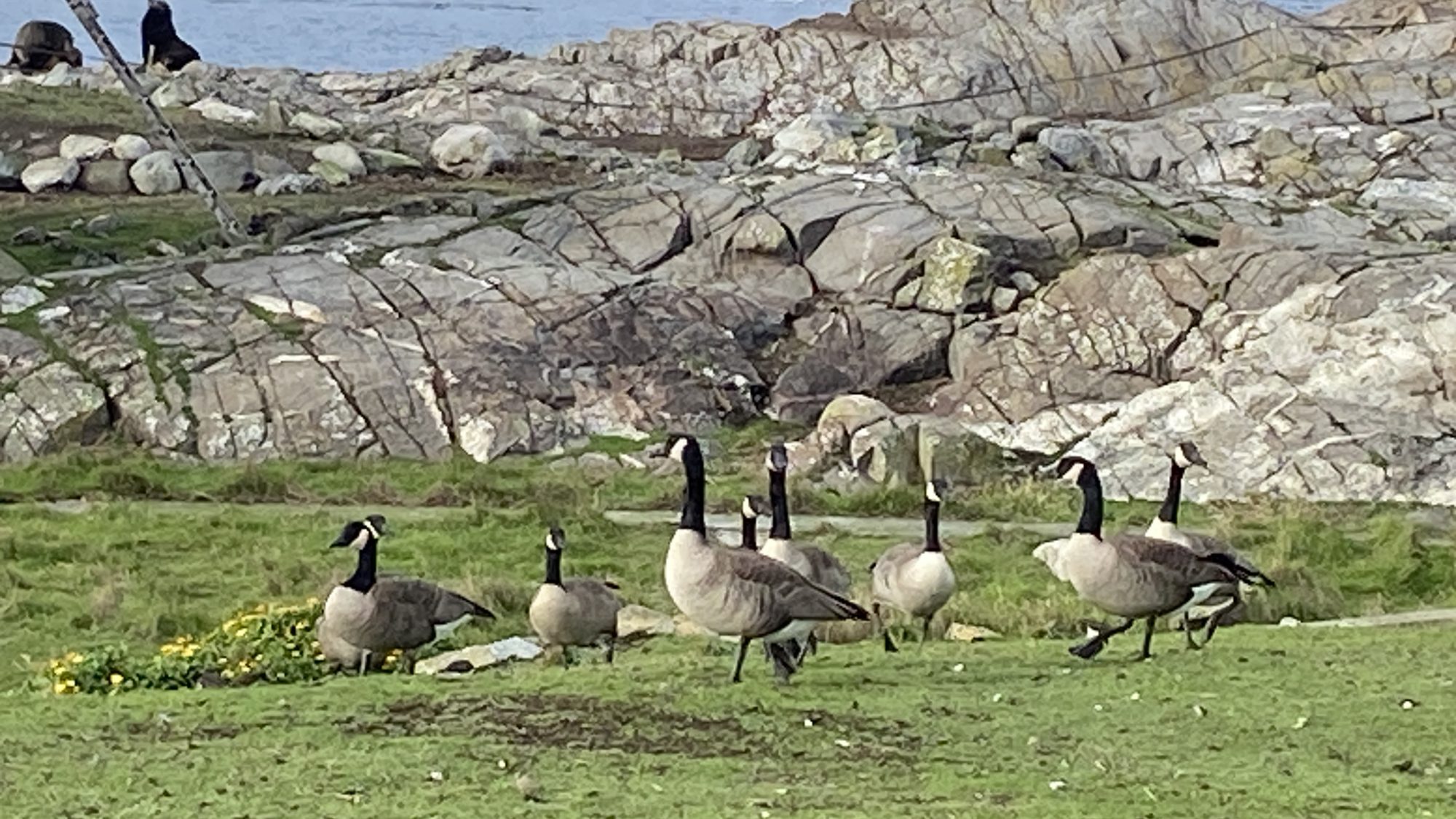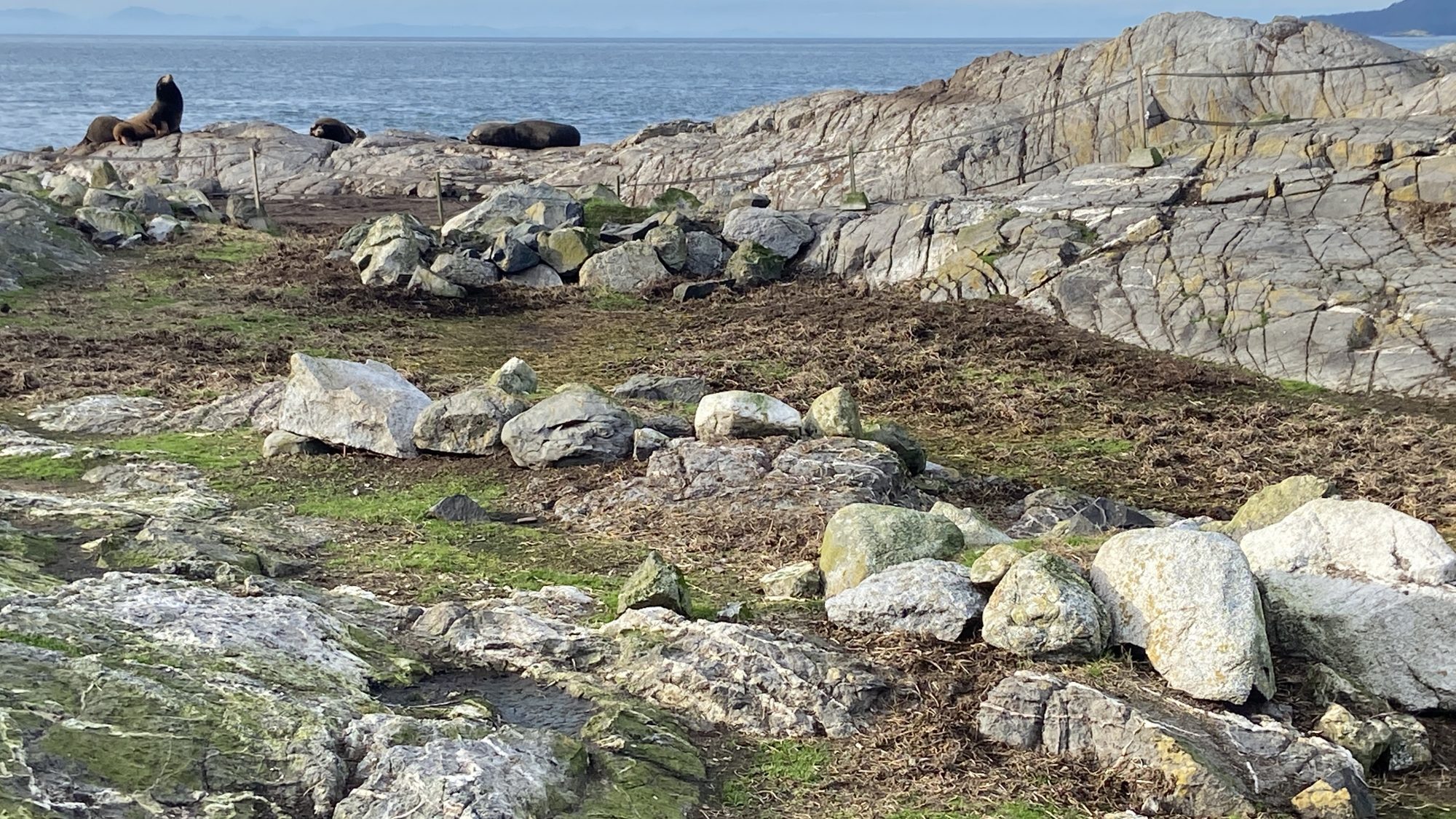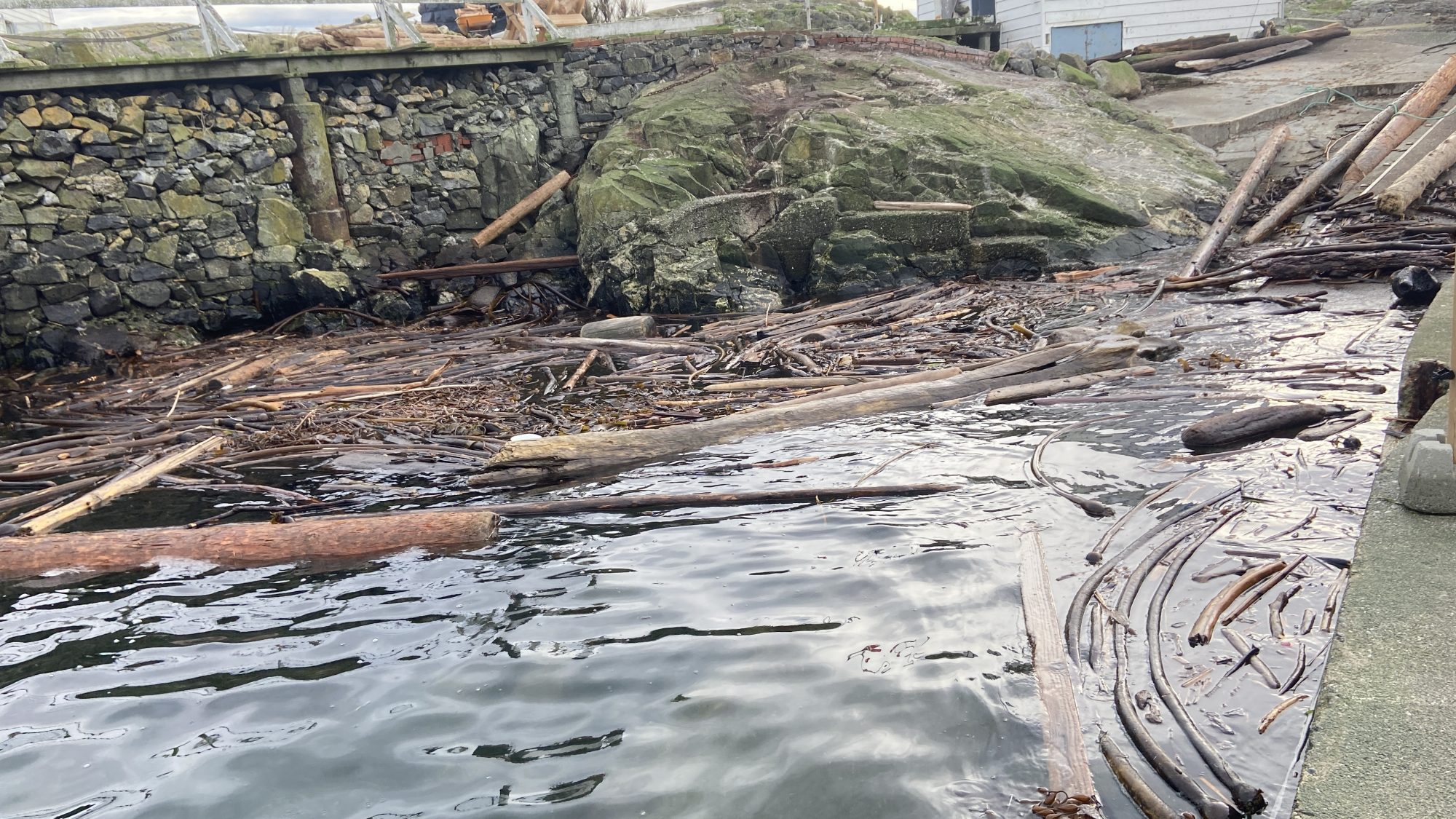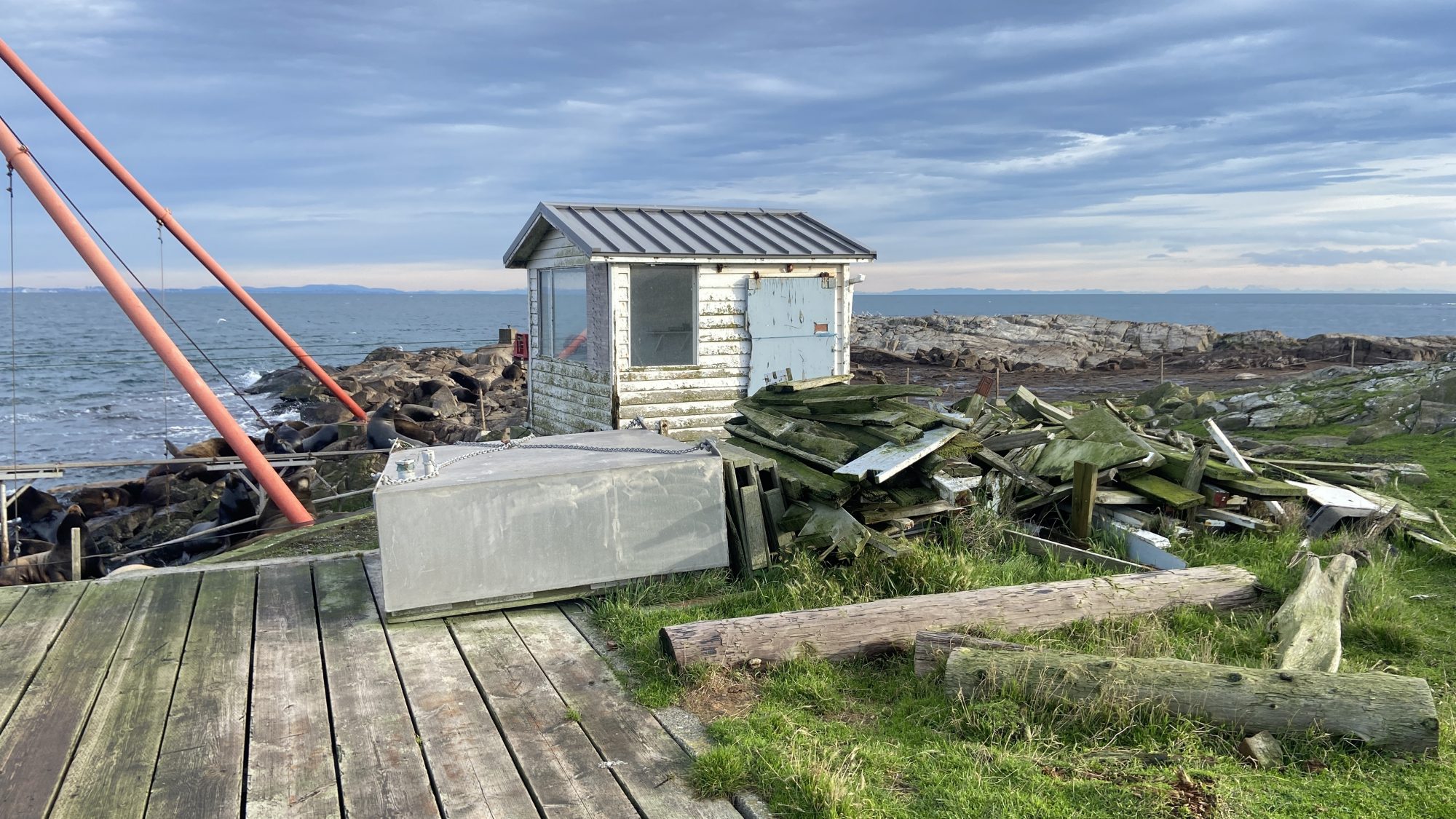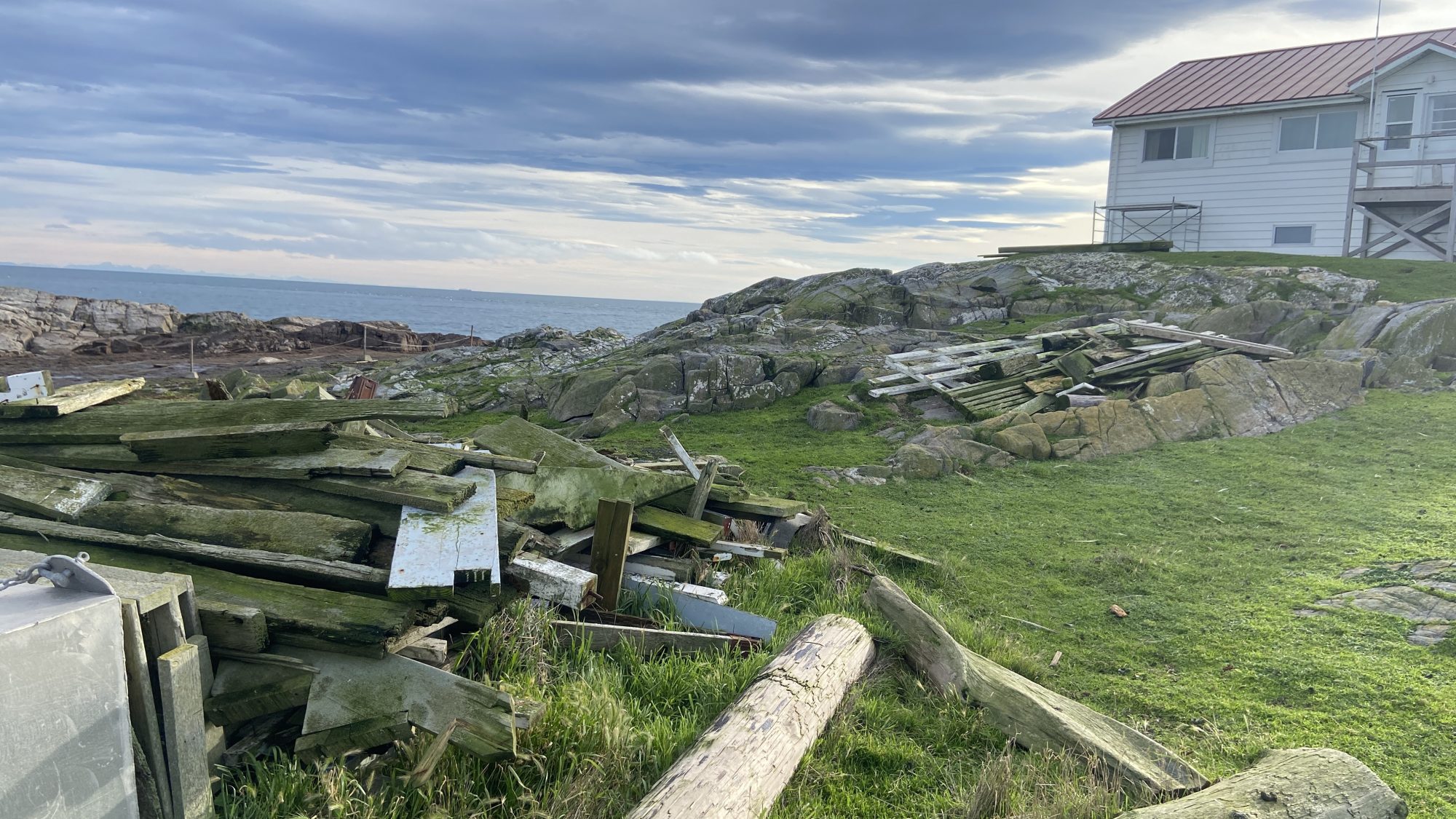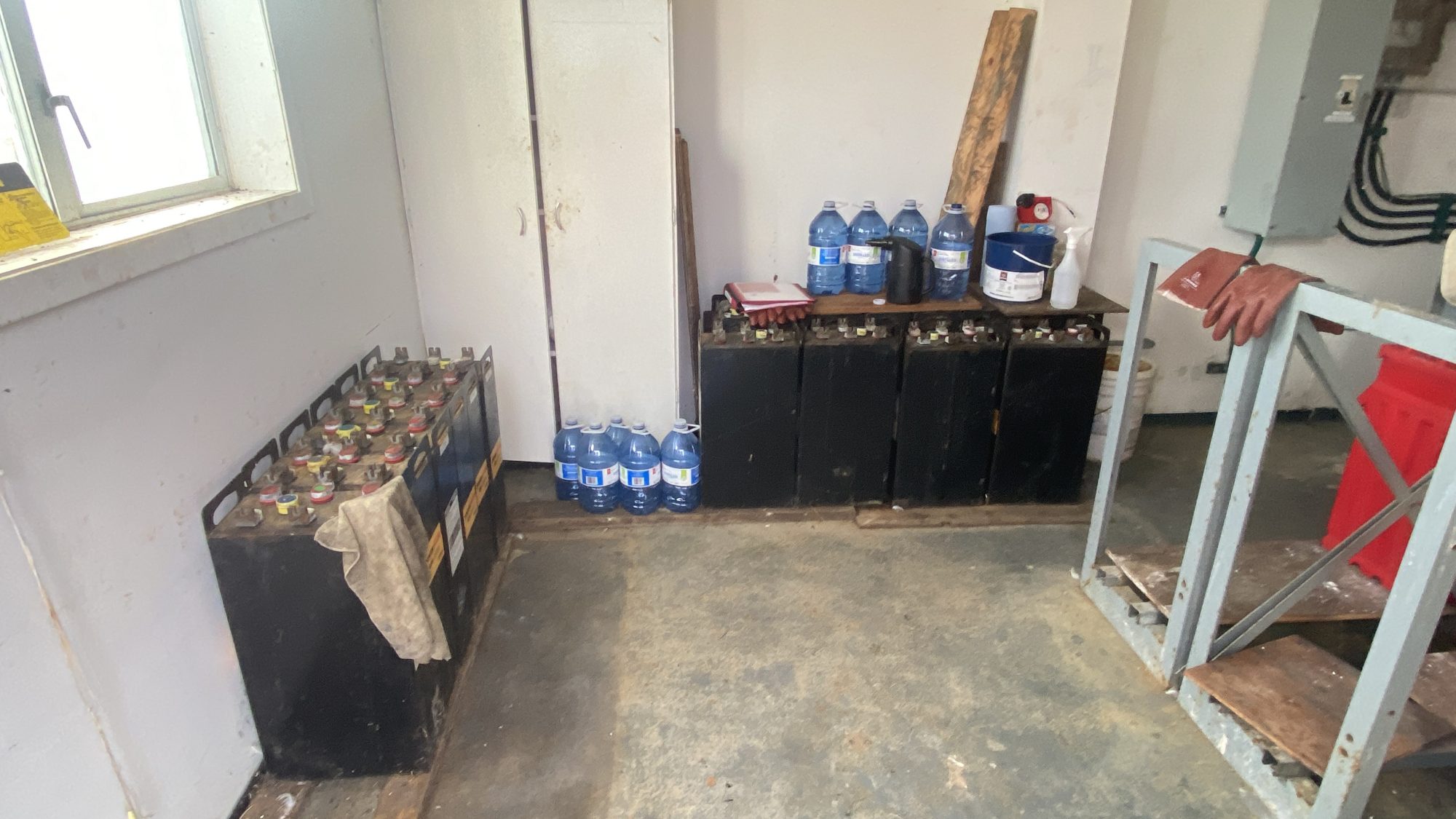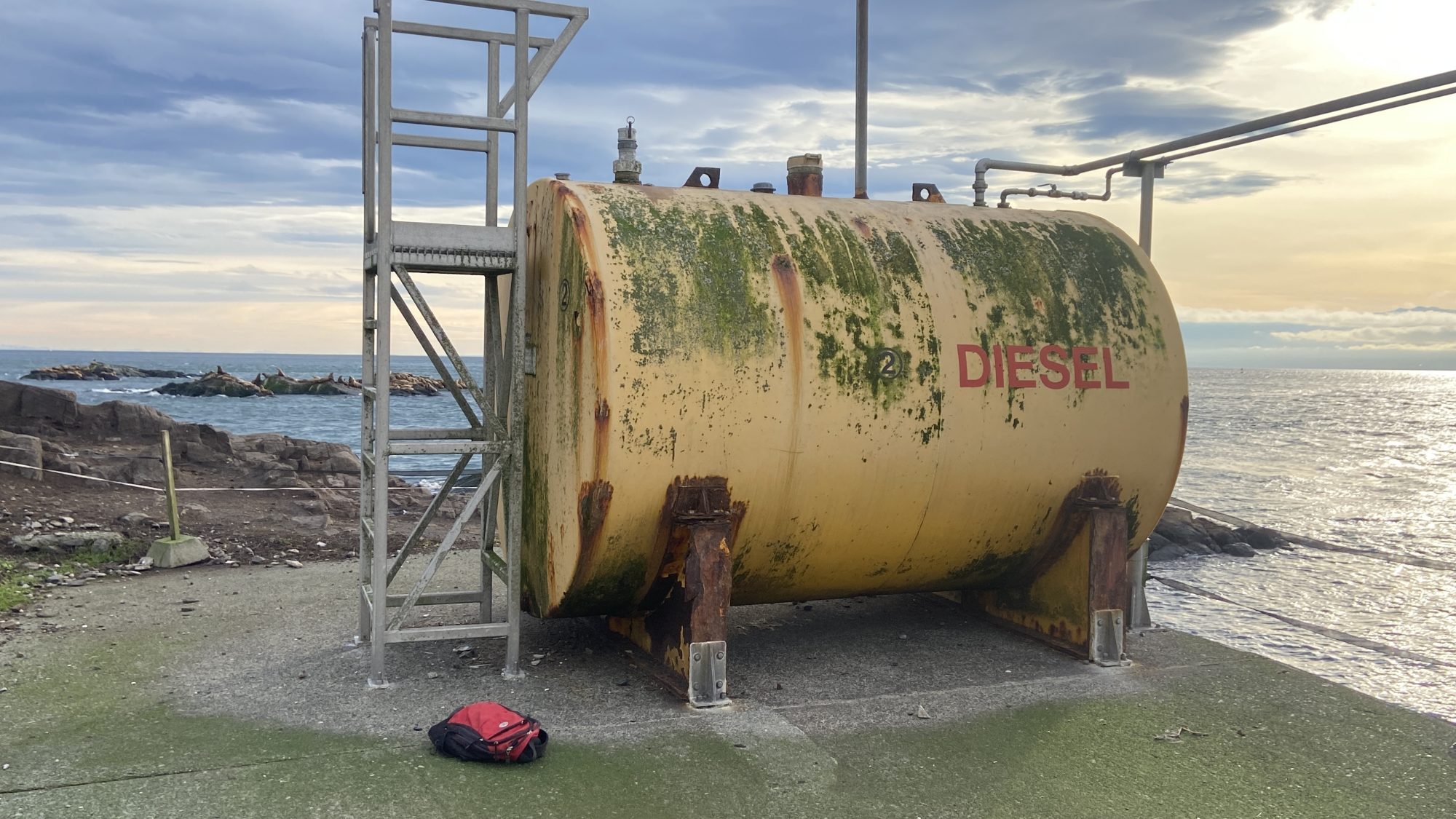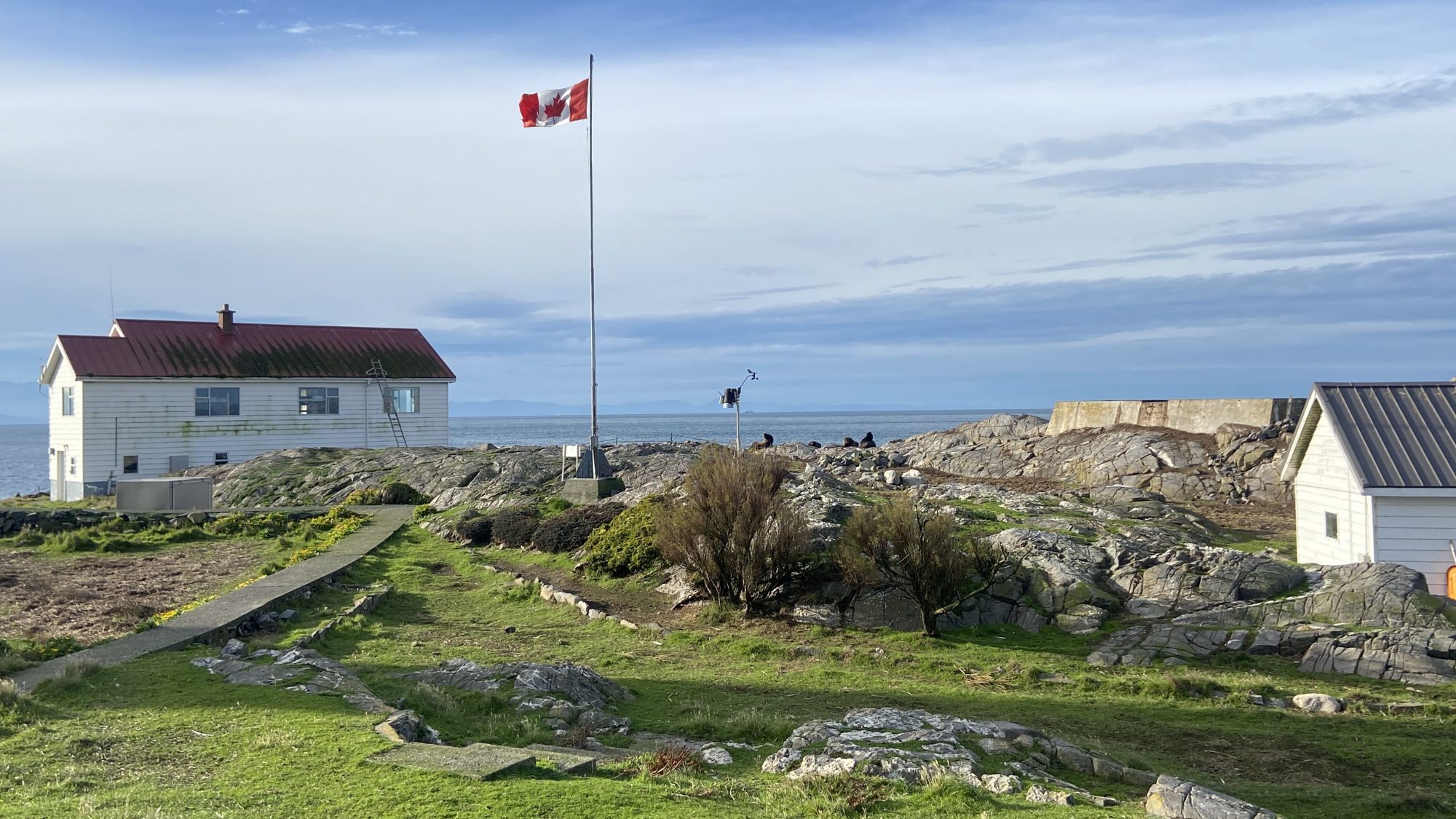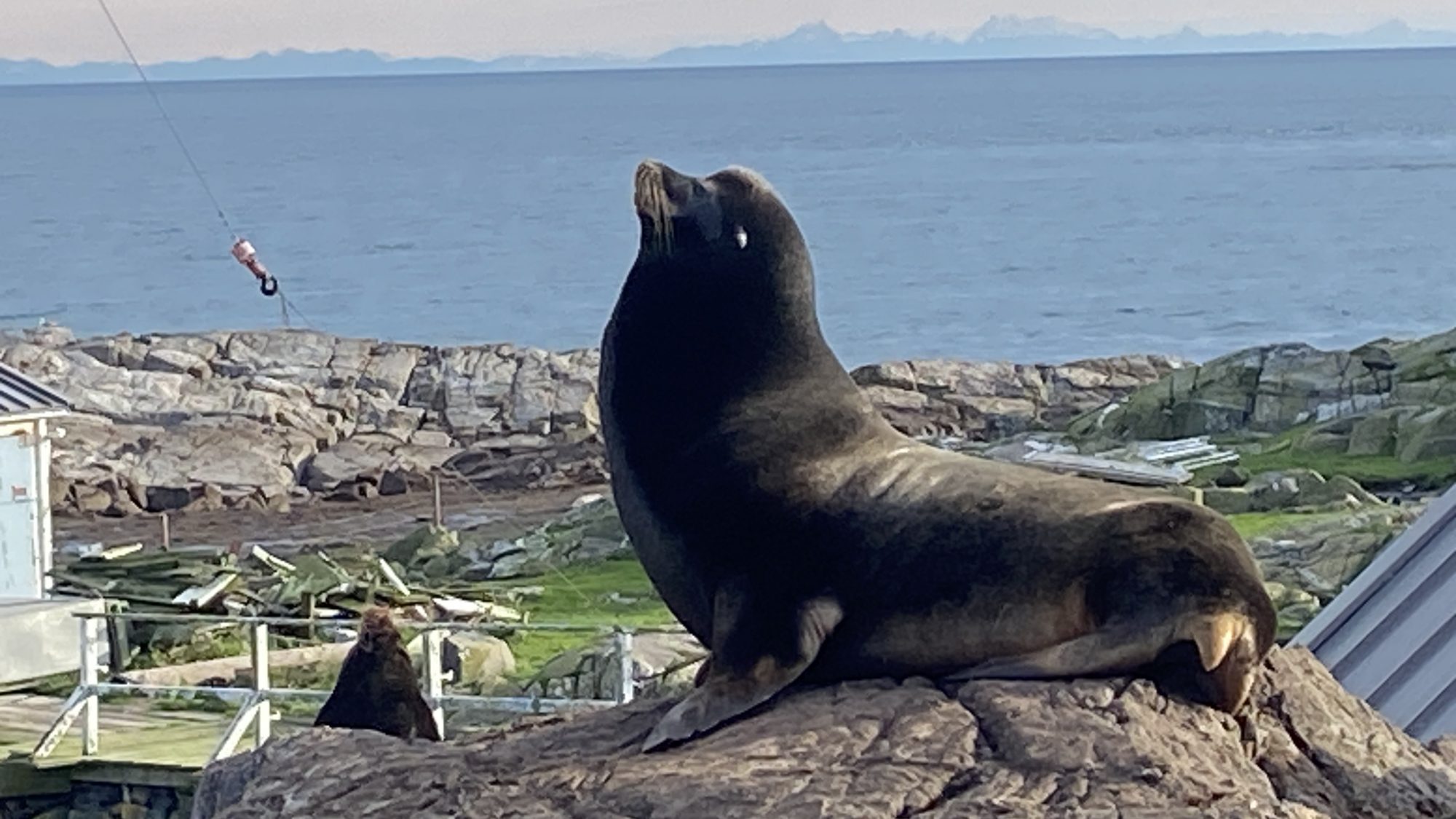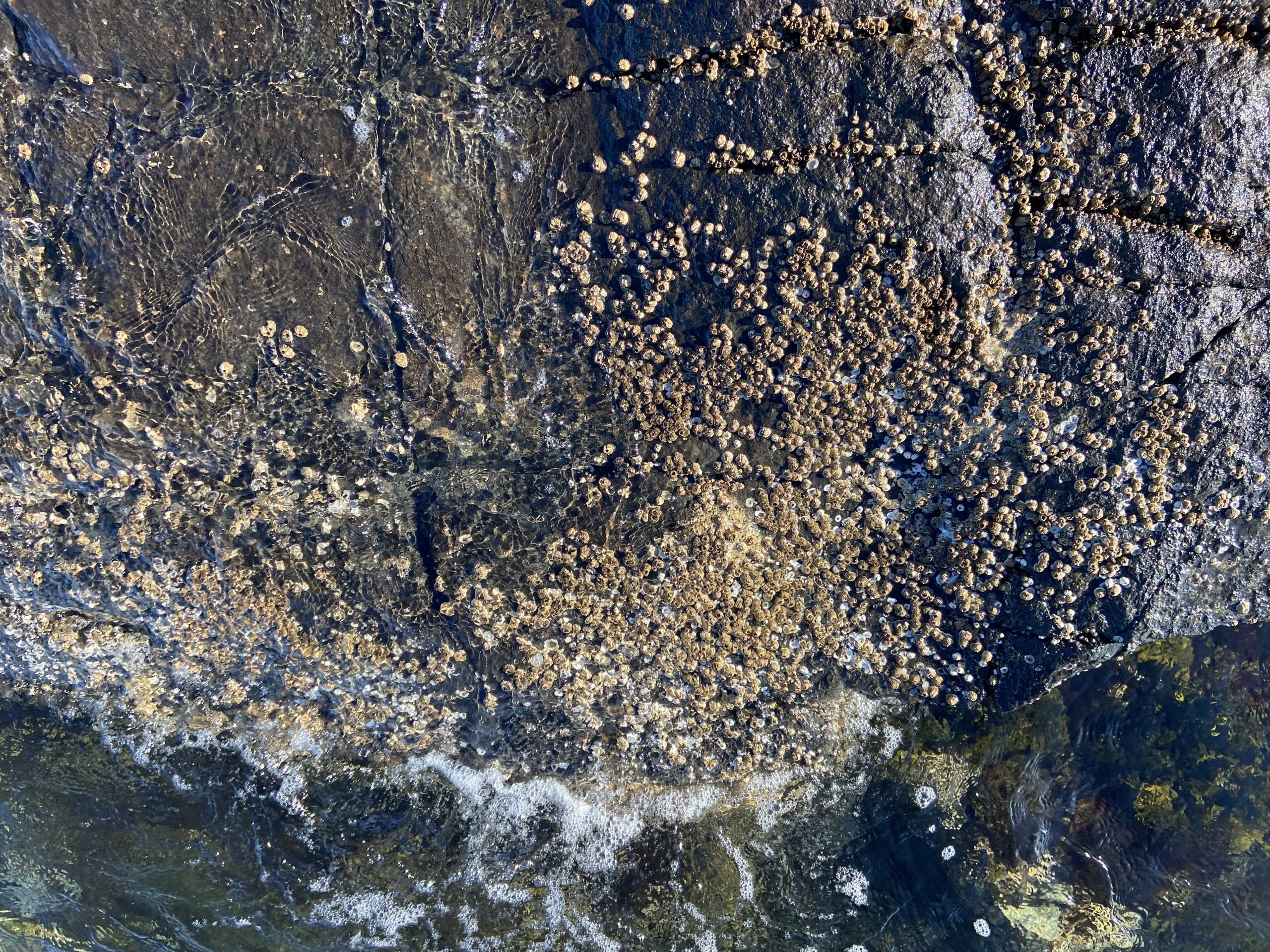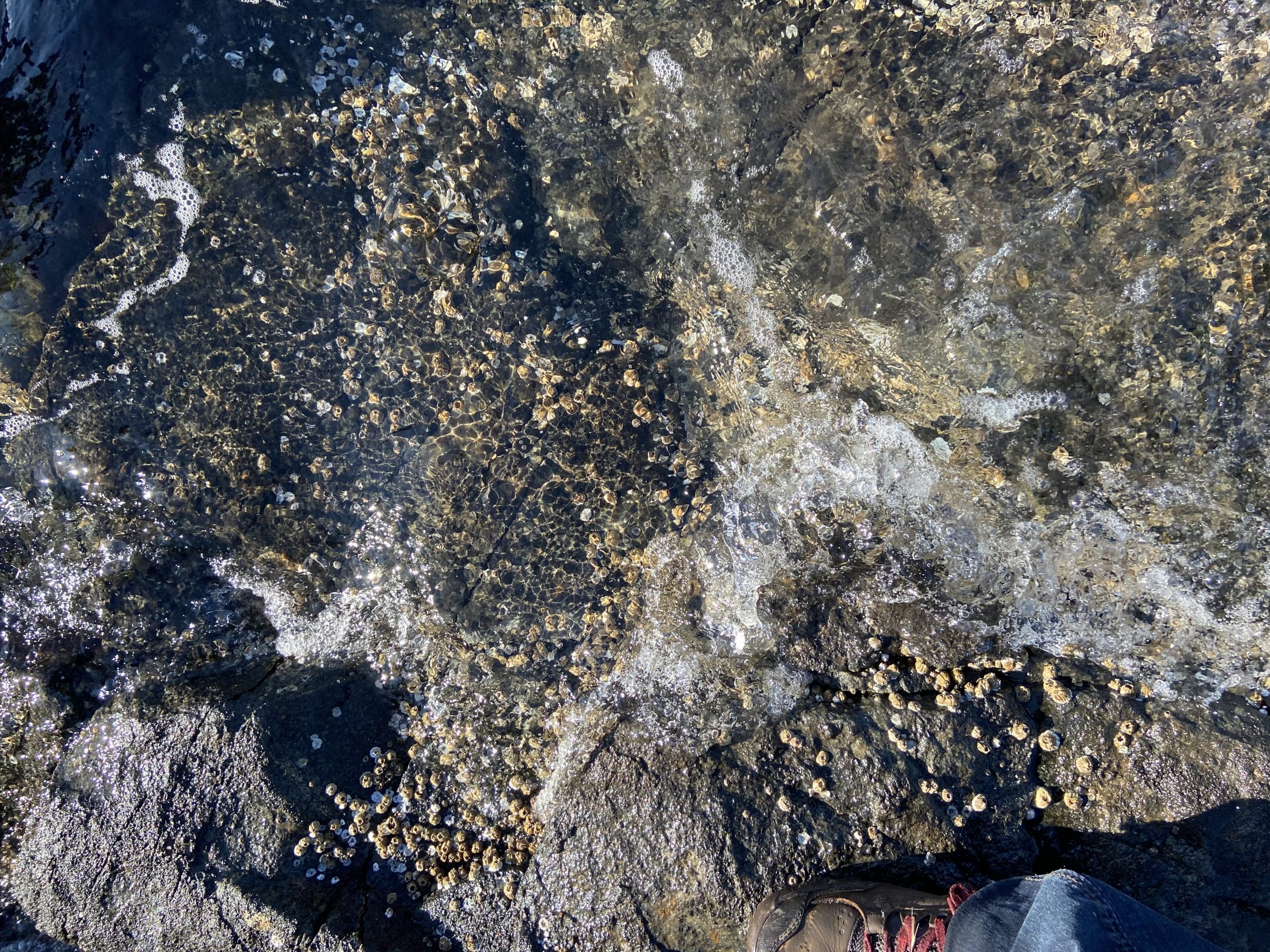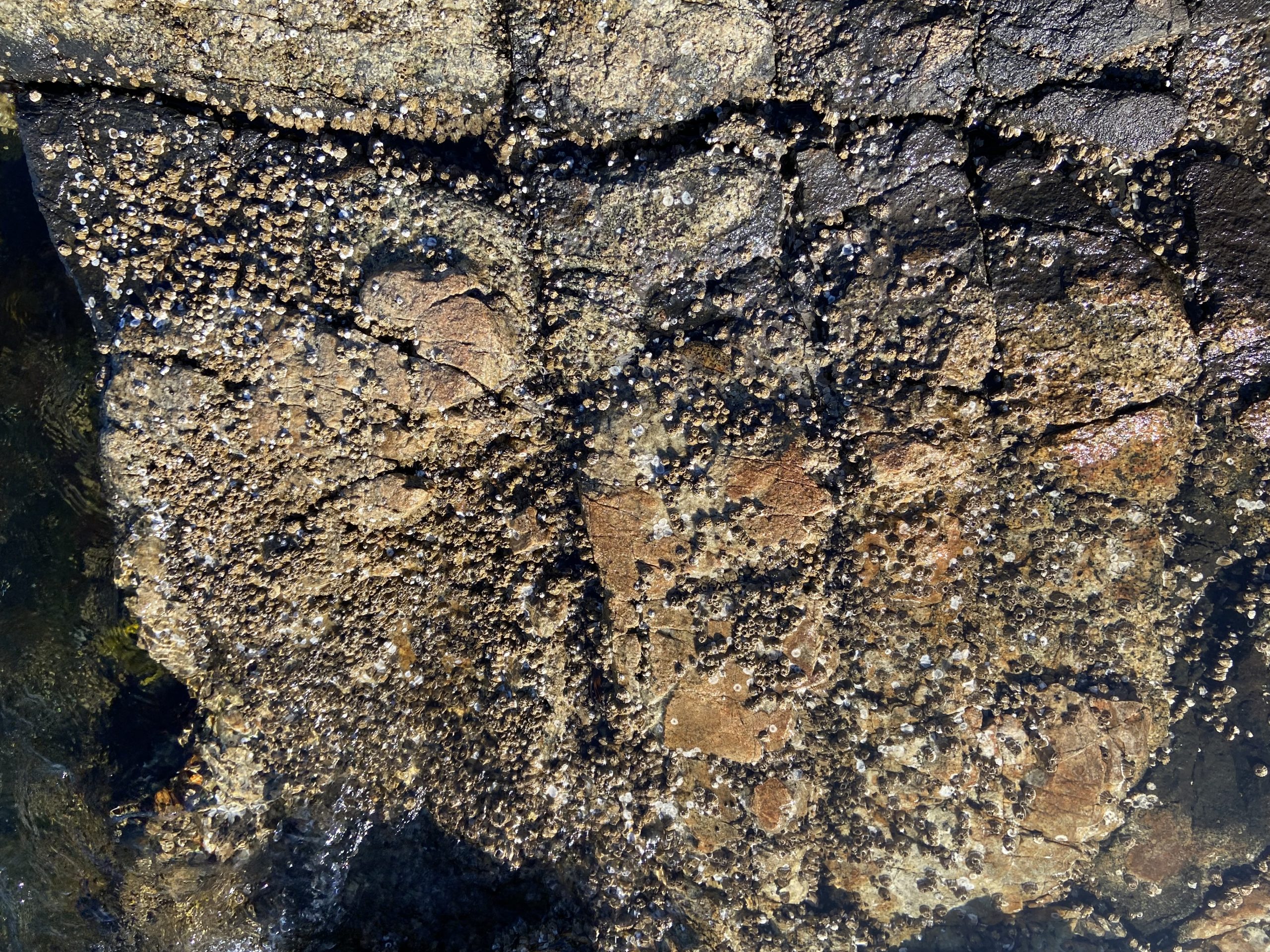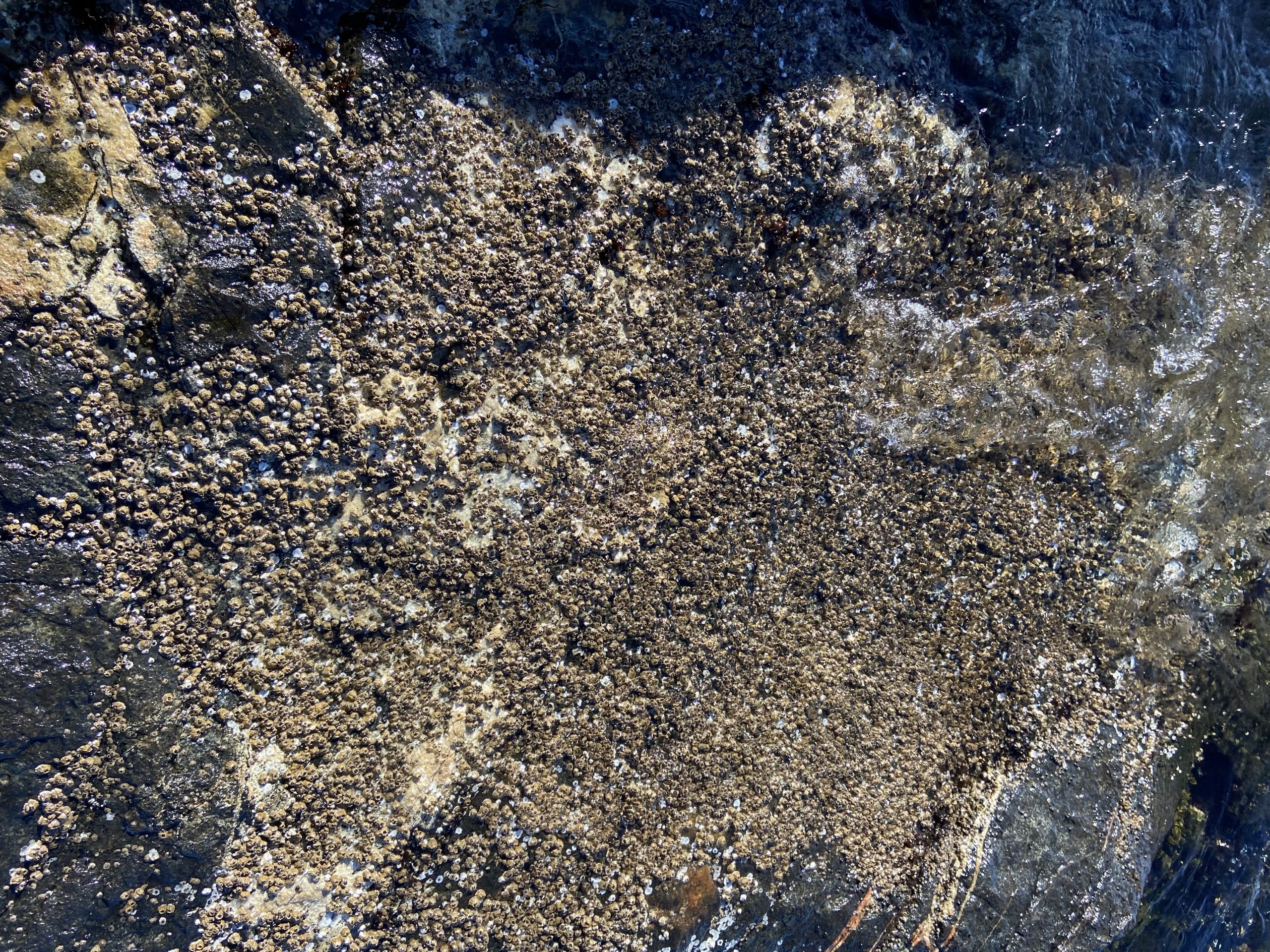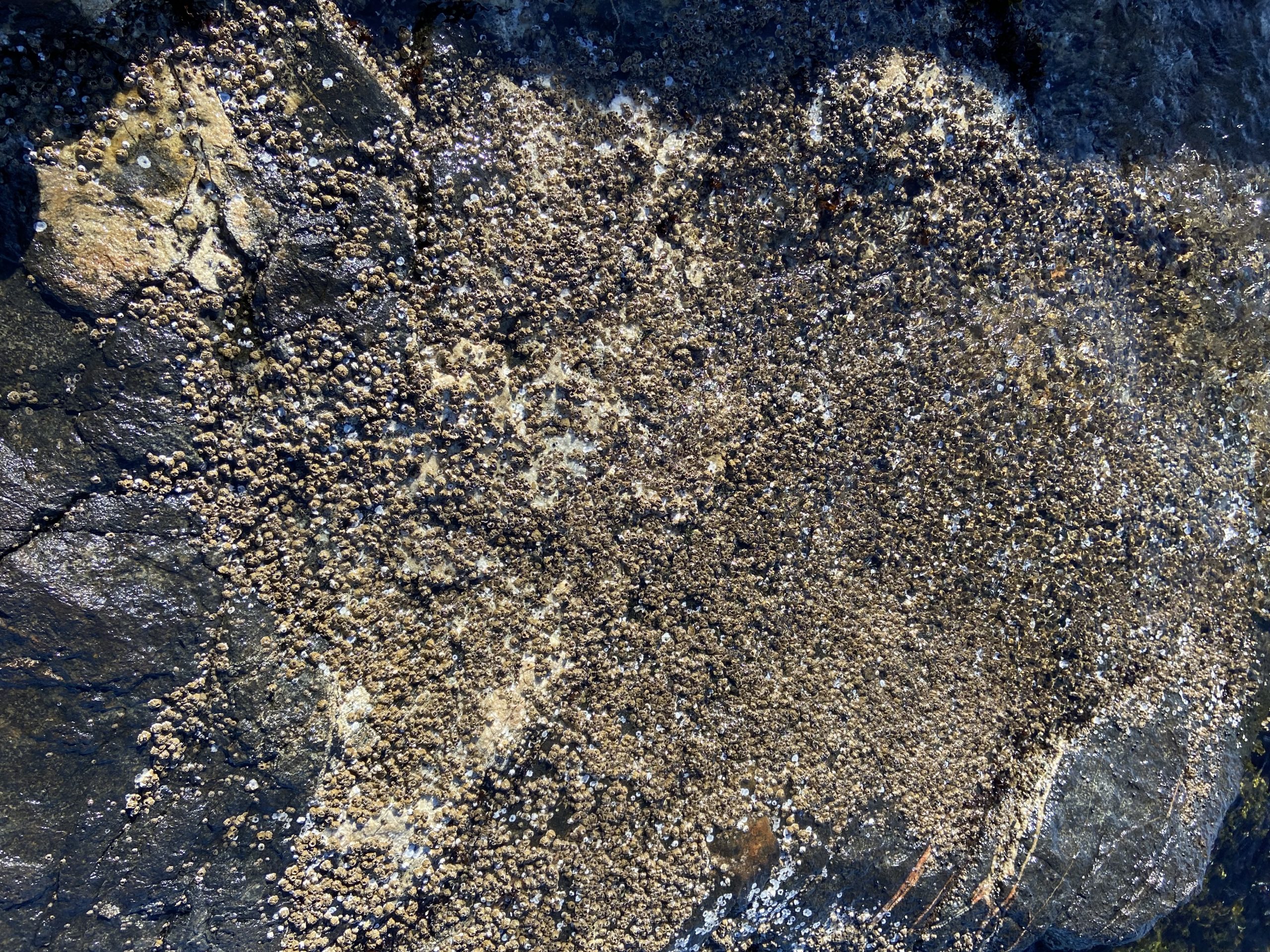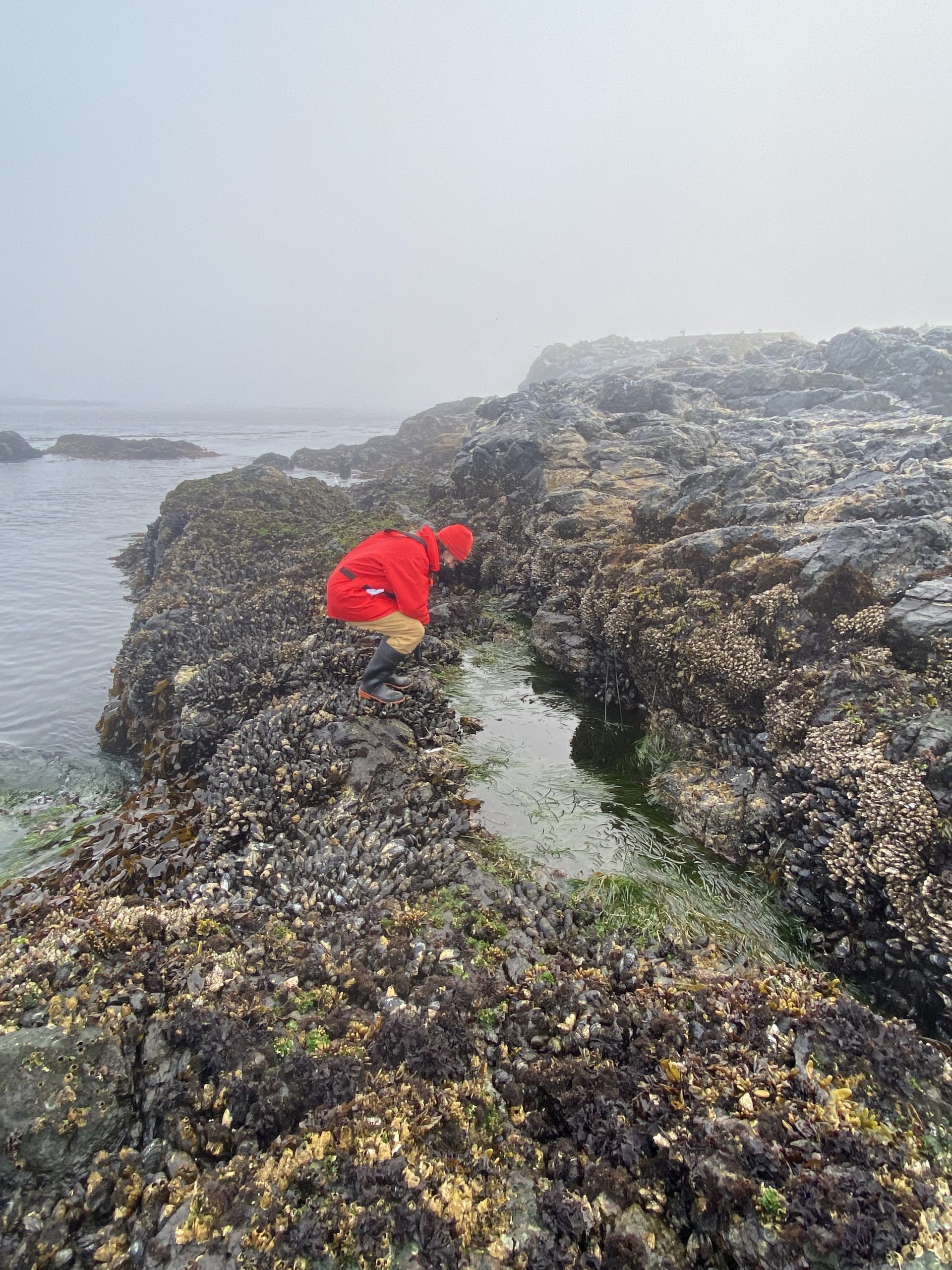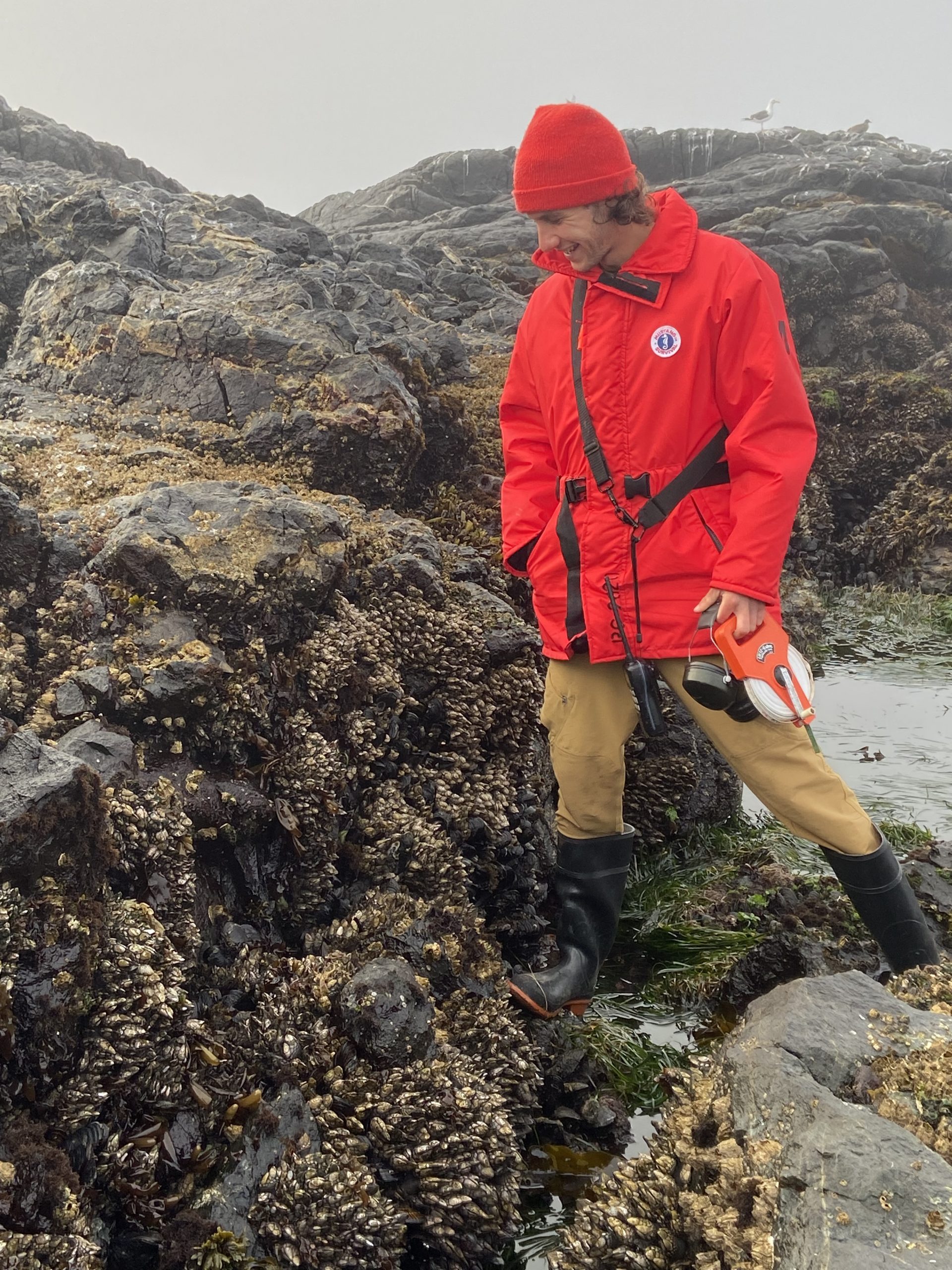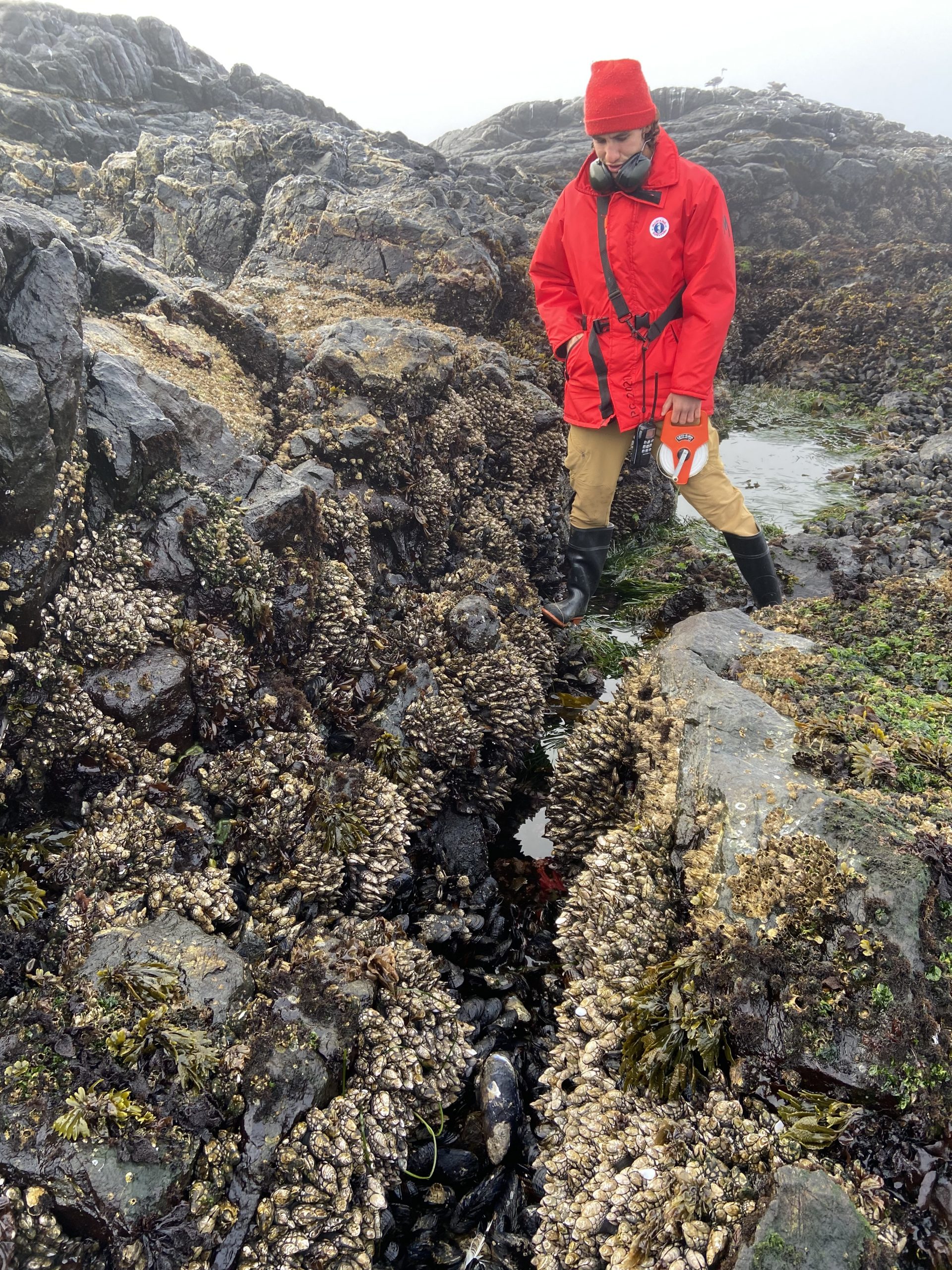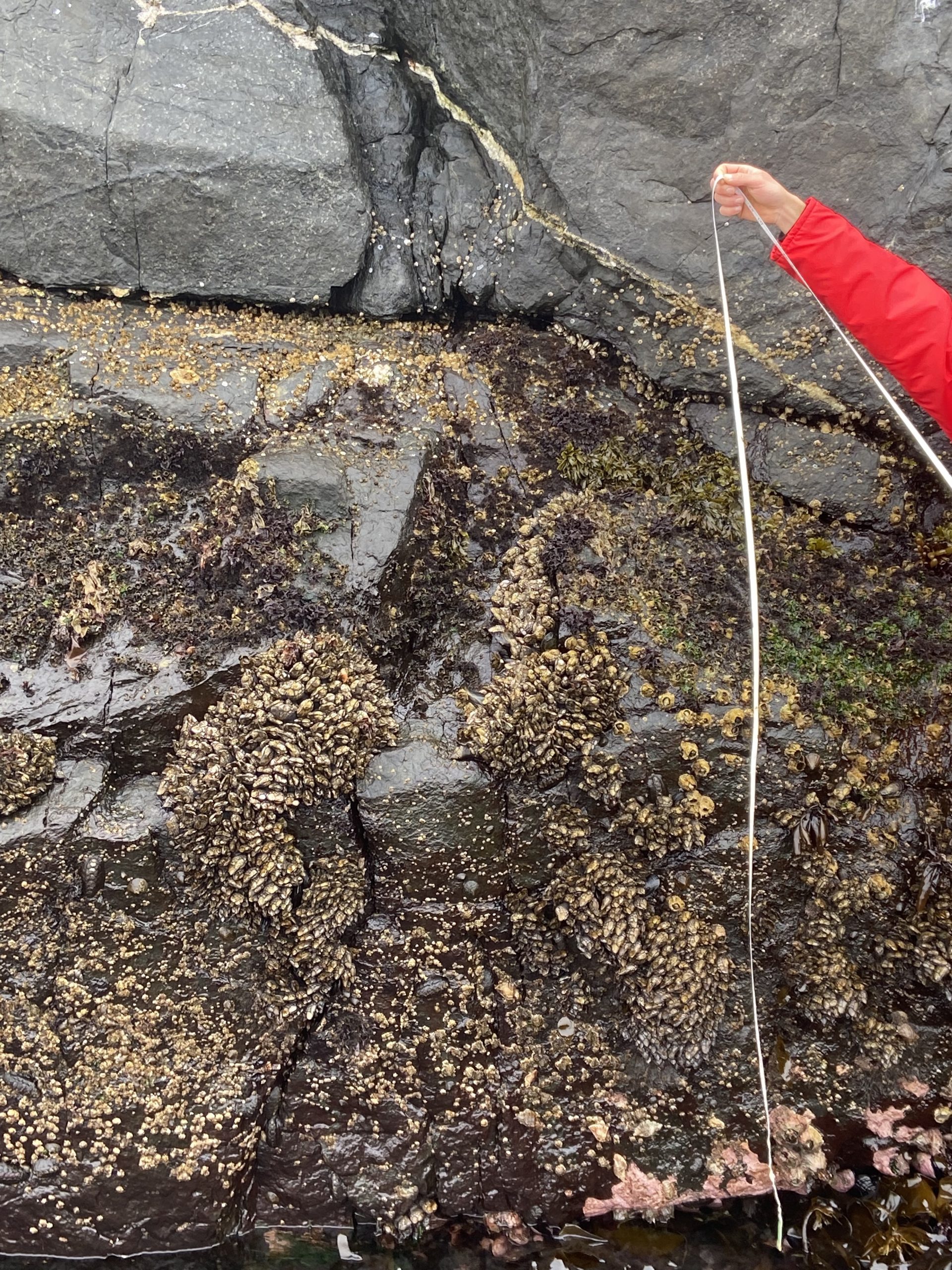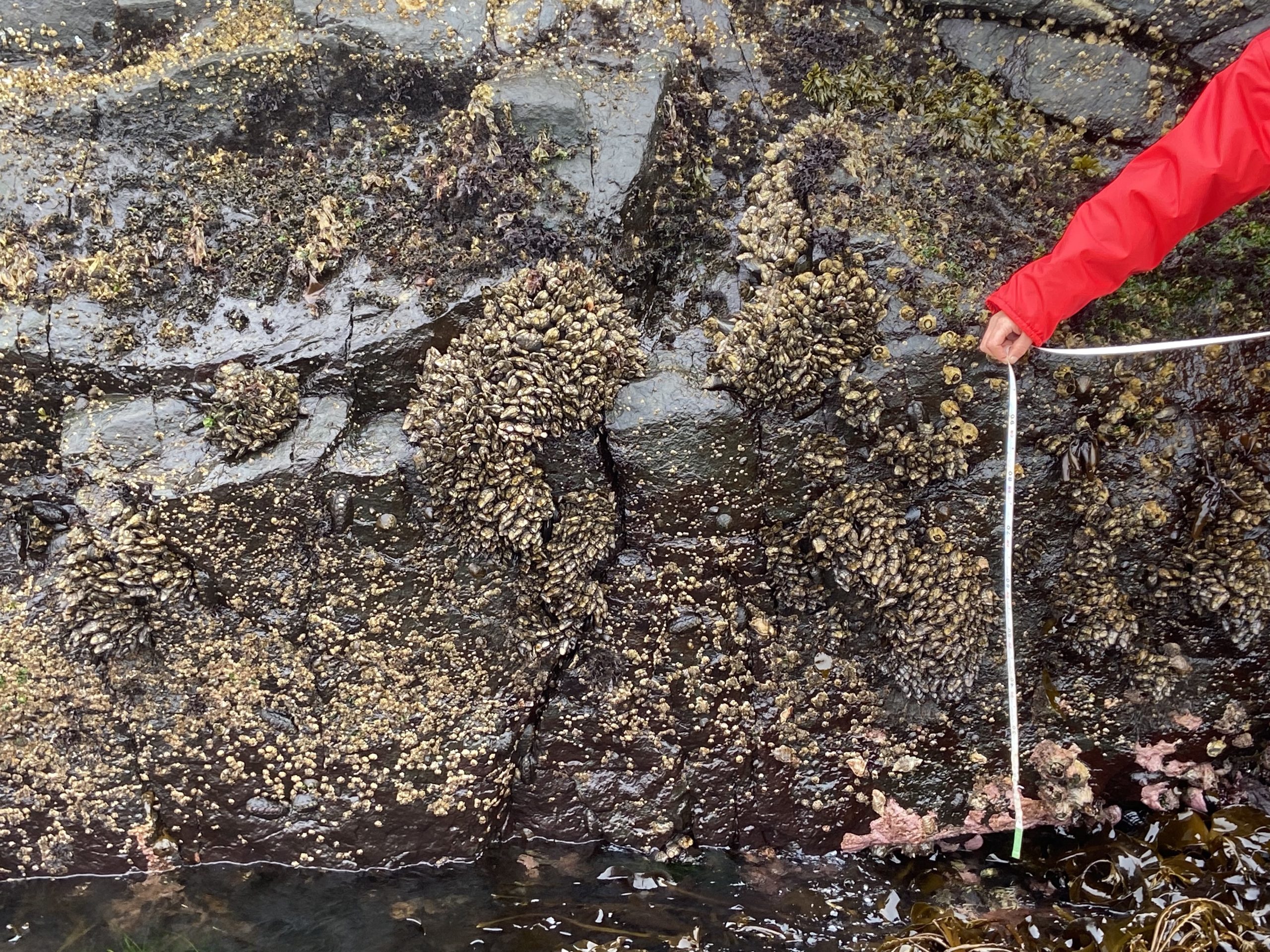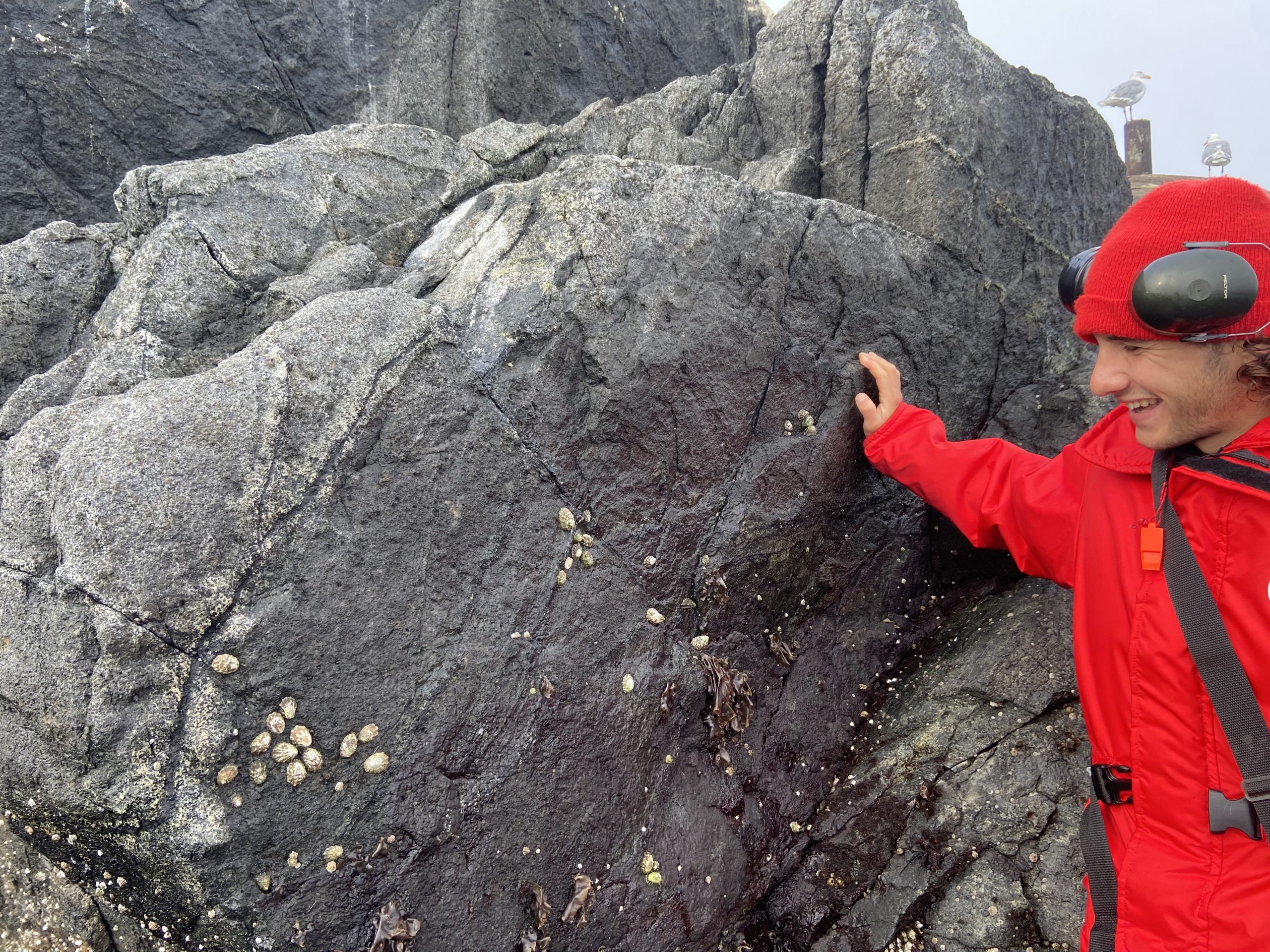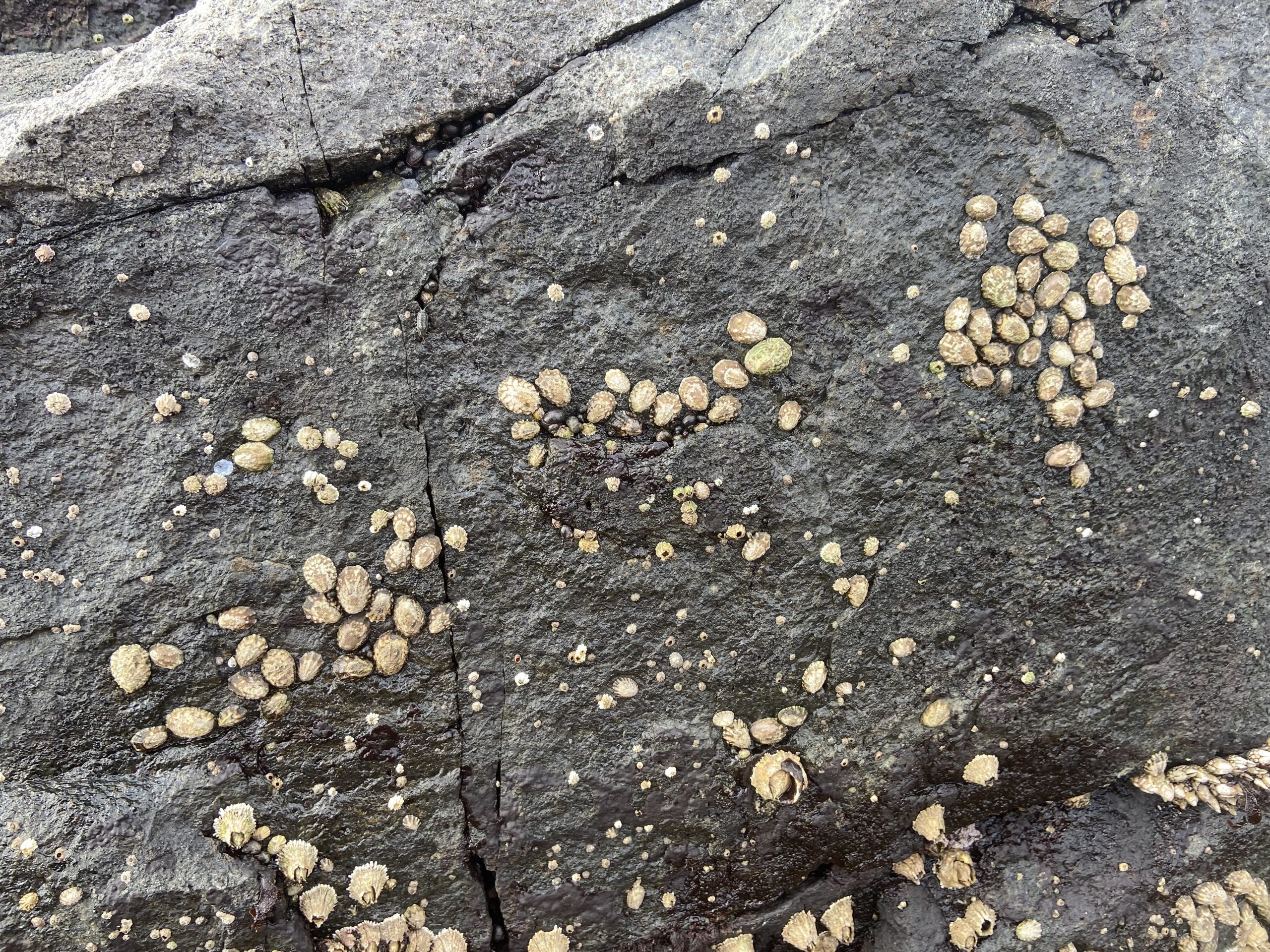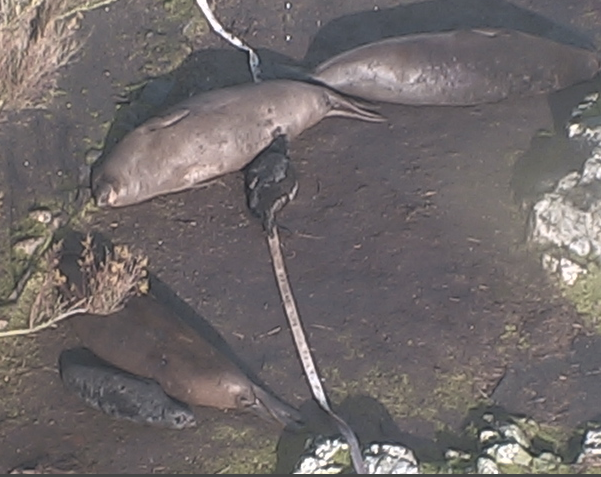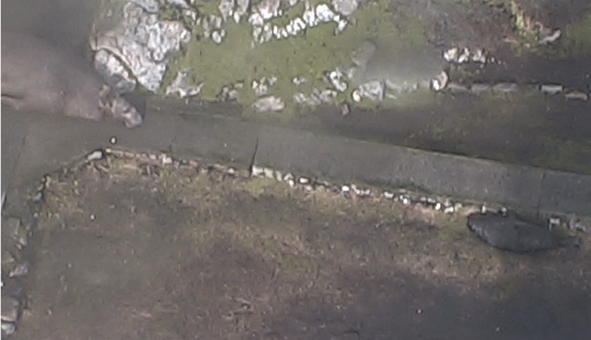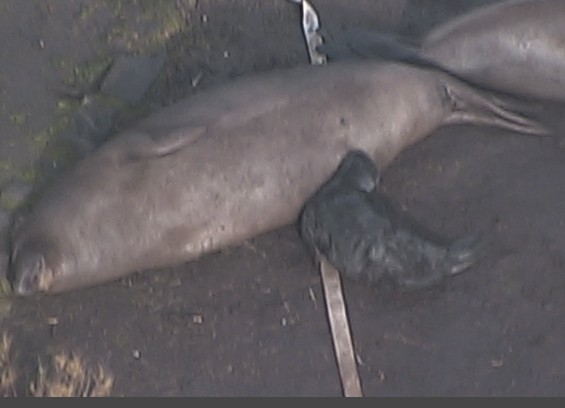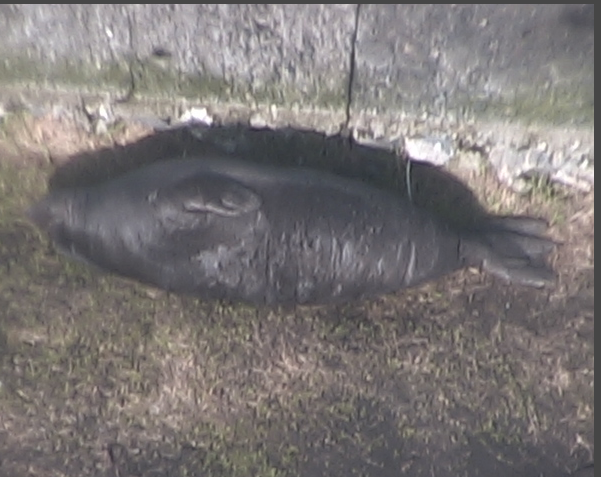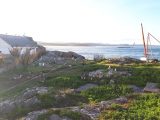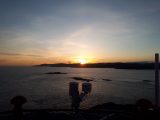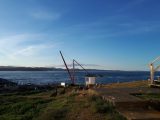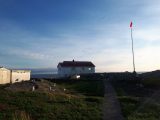The following article from the Victoria Times Colonist with a video of an interview with Dr. Martin Haulena of the Vancouver Aquarium appeared in the Times Colonist on October 29 2024 concerning the rescue of an entangled sea lion at Race Rocks Ecological Reserve:
Category Archives: Marine mammals video
Race Rocks Ecological Reserve #97 Wardens Report December 2023
Wardens Report by Garry Fletcher.. December 13, 2023
Past Wardens reports may be accessed at https://racerocks.ca/category/er-warden-report/
I got a ride out on the Second Nature vessel of Lester Pearson College. Greg and Cedrick were taking out two technicians to deal with problems with the Solar panels and the diesel engine.
A herd of California Sea lions who have become accustomed to boats landing at the docks greeted us at the docks.
On the North side of the island there were mainly California sealions.
The Northern sealions predominated on the south side of the island Their distinctive growl and larger size sets them apart from the California Sea lions
- California Sea lions on the south side of the island
- Brian Blagdon from Viridian Power installing new parts on the stand
- Jordan Cole from Viriidian Energy Co-op upgrading equipment for the solar energy generation system
For the several hours that the technicians were busy in the engine room I could check out the whole island. Additional solar panels have been added to the array shown in the video below taken from the roof of the energy building/engine room. In the winter the diesel engine has to run for a few hours to help charge the batteries.
From the helicopter pad I observed a very nervous mixed herd of California and Northern sealions that were occupying the area on the West side of the island, preventing me from going in that direction to check out the tidepools.
- When walking around with Ecoguardian Derek Steriling, , we saw three elephant seals .
- We anticipate more of them to arrive in the next few weeks and look forwrd to the new pups that will be born in January
Race Rocks must be one of the few outdoor locations in British Columbia where flowers bloom year round because of the surrounding waters never dropping below 8 degrees C which moderates the temperature.
- Marigolds, planted years ago by the lightkeepers, thrive along the pathways .
- Where the sealions have hauled out , the vegetation is completley destroyed . In this area there were some Romanzoffia growing in past years but it is doubtful if they will be around now
- The Pearson College hired Ecoguardians have a continual job to do checking the temporary electric fence that cordons off the haulout areas from the vegetated part of the island
- The Canada geese however with their constant grazing , keep the grass suppressed
- In this area, although the sealions are fenced out, excessive grazing by geese damages the turf making the Indigenous burial cairns more susceptible to erosion and collapse.

There were many Black turnstones around the island. They are found here year round although they are not known to nest here.
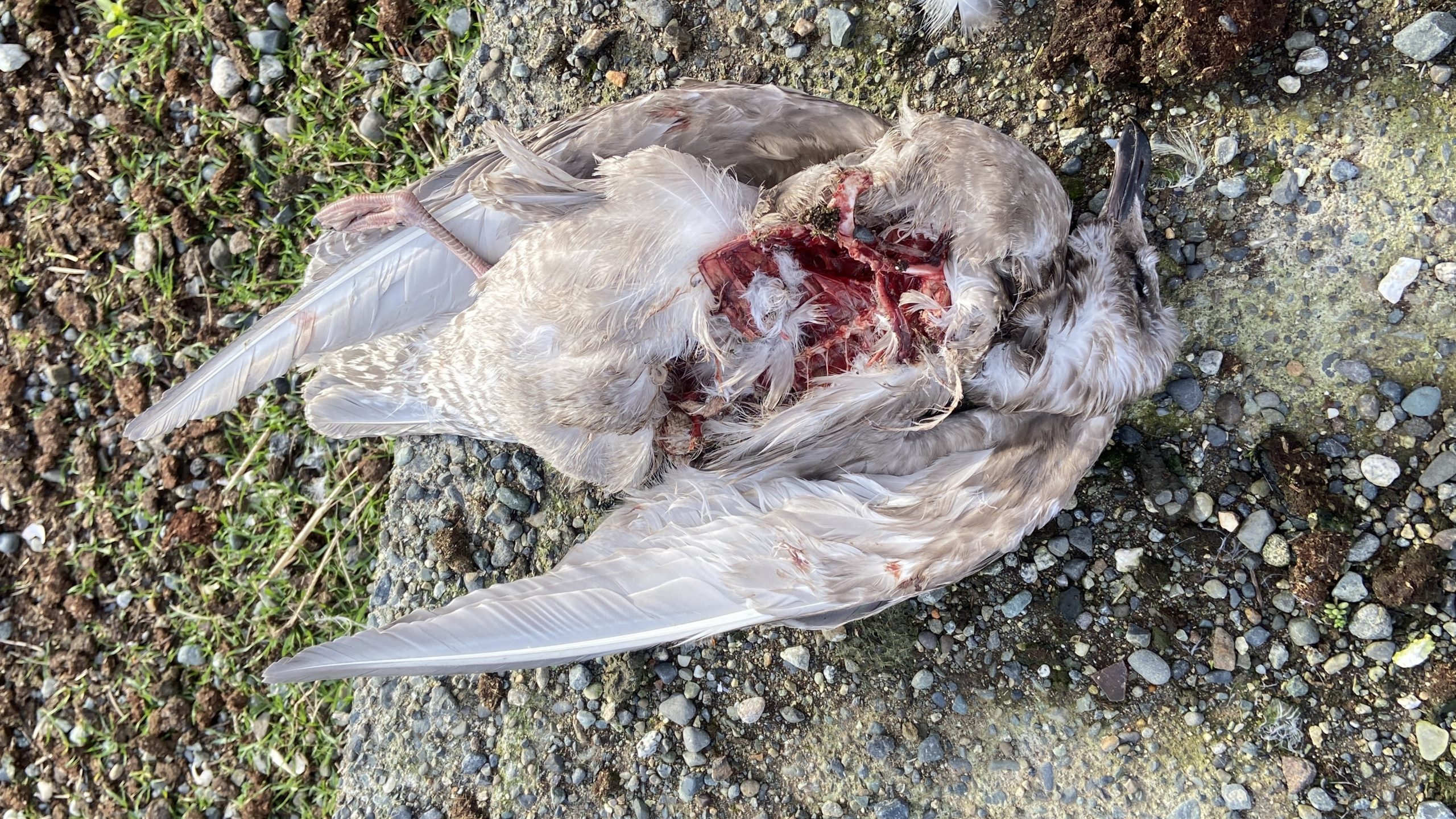 There has been a high number of gull mortalities this past year. This one is missing the breasts indicating it was a meal for the Bald Eagles. They now patrol the area regularly and this has probably contributed to the low number of overwintering gulls.
There has been a high number of gull mortalities this past year. This one is missing the breasts indicating it was a meal for the Bald Eagles. They now patrol the area regularly and this has probably contributed to the low number of overwintering gulls.
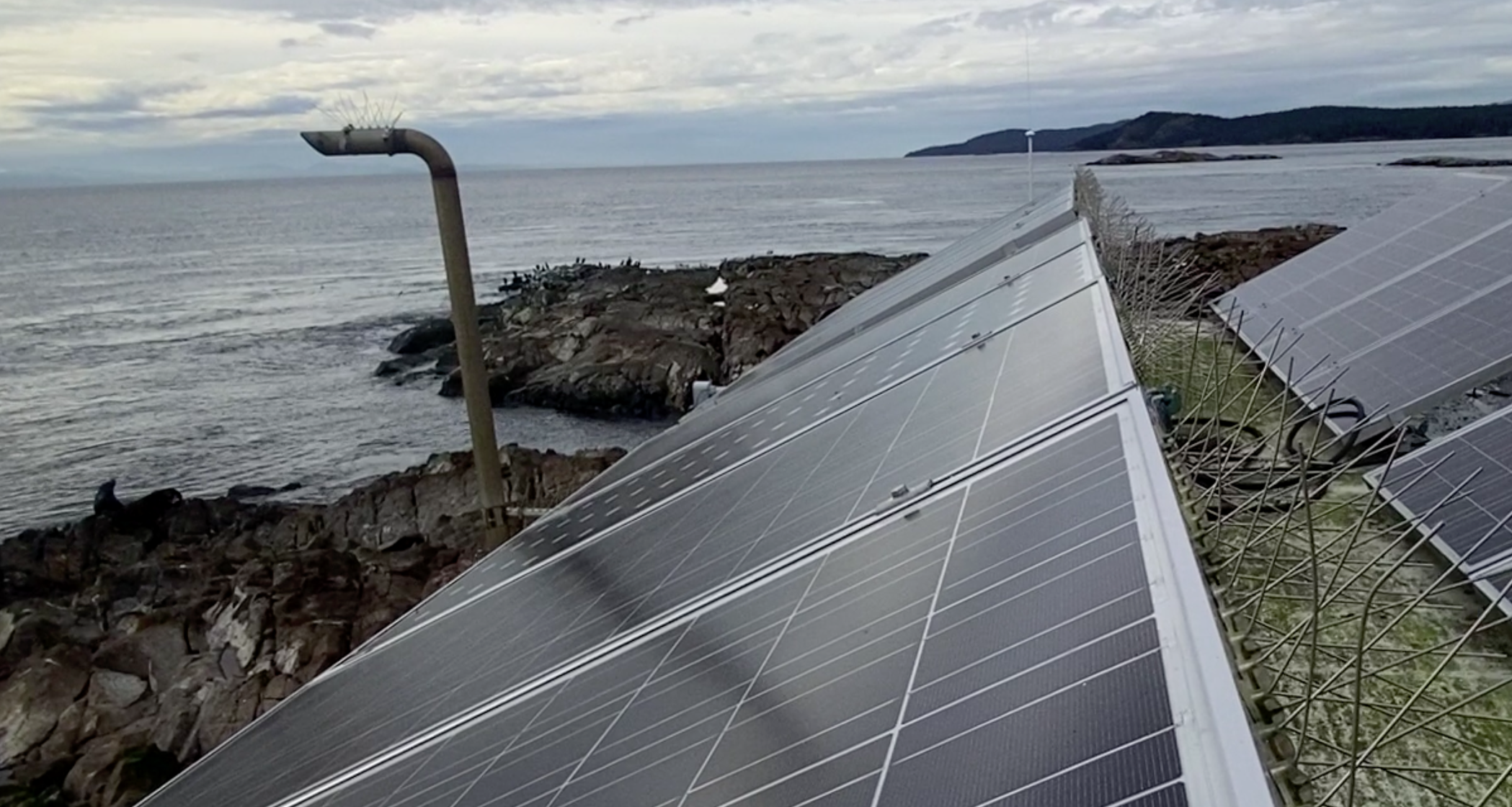 The absence in overwintering seagulls at this time of of year was very obvious. Ined some years they have number in the thousands. The south-west corner which usually is heavily populated only had a dozen of probably brants cormorants, and a small flock of less than 100 gulls was on the north-east corner of the island
The absence in overwintering seagulls at this time of of year was very obvious. Ined some years they have number in the thousands. The south-west corner which usually is heavily populated only had a dozen of probably brants cormorants, and a small flock of less than 100 gulls was on the north-east corner of the island
While I was there , Greg and Cedrick from Pearson College helped in cleaning gutters, definitely a two-man job for safety reasons, and hauling up some of the logs in the harbour by the slipway for cutting up for firewood.
- logs to haul up for firewood
- cleaning the gutters on the science house
SOME WORK YET TO BE DONE:
Managing a former light station and an Ecological Reserve can be a large job. Pearson College does an admirable job in fundraising to keep the place going. It is after all the only Ecological Reserve in the province which has human dwellings and a full time Ecoguardian paid for by Pearson College. Since 1997 Pearson College has taken on the role of management of these facilities which require constant upkeep in a very demanding physical and biological environment. I will point out several items below that are needing attention.
- For several years now this pile of lumber from the replacement of the balcony has been awaiting removal .
- BC Parks has indicated they would do it but getting action on it has not been successful.
- These are the new storage batteries for the island
- The old stotrage batteries remain in the battery room awaiting recycling.
This is the last of the old storage tanks used by the coastguard. They await removal. It is just a matter of time until the salty environment encouraging the rust could cause further problems.
Below are some suggestions I would like to make about things that are not urgent but to which attention may be paid in the future.
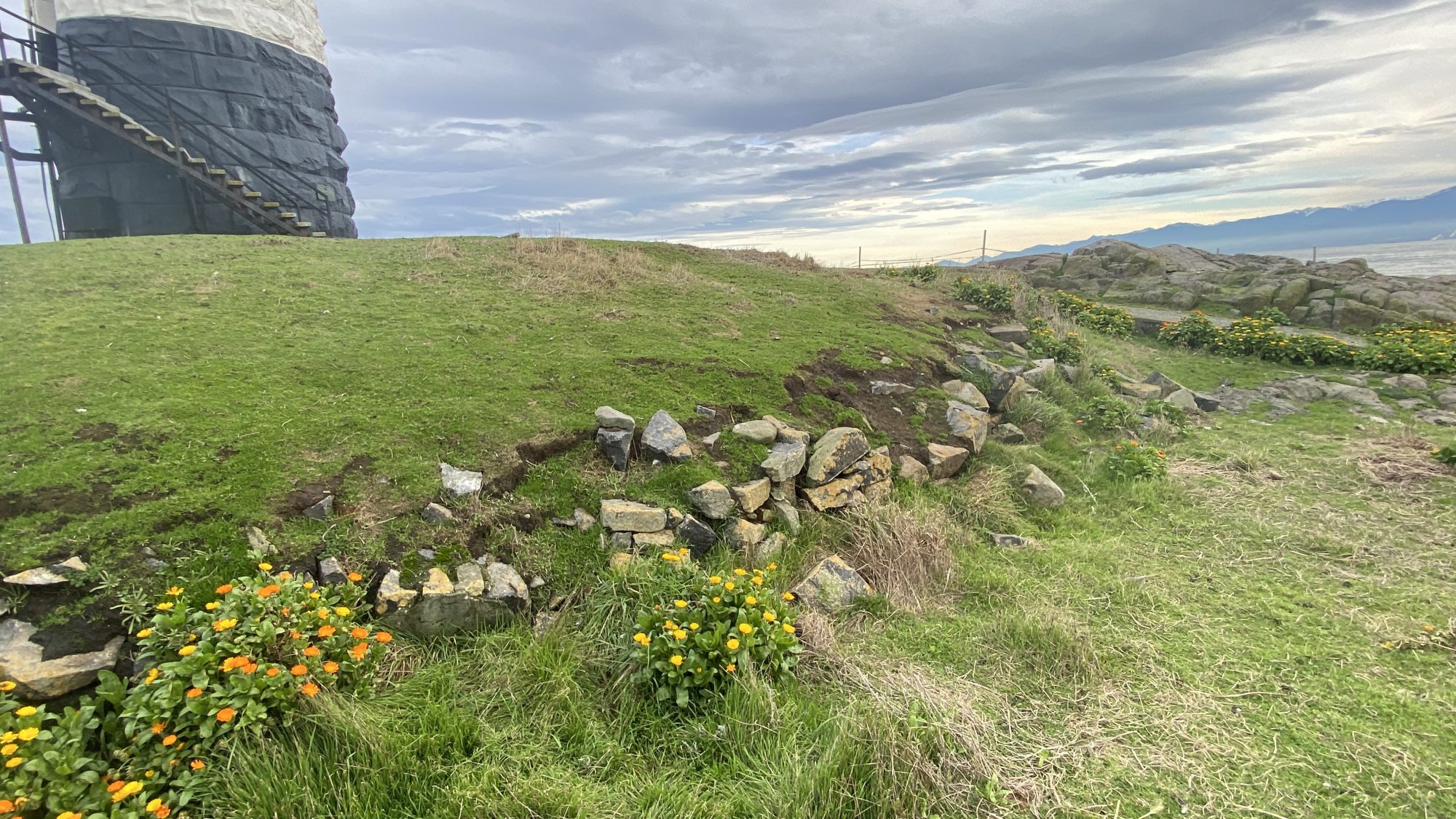 The rock wall which was eroded by the hurricane in 2006 Is still in a partly fallen state, contributing to bare soil and erosion. It wouldn’t take much effort to repair this to improve the stability of the area. ( maybe a student project week item?)
The rock wall which was eroded by the hurricane in 2006 Is still in a partly fallen state, contributing to bare soil and erosion. It wouldn’t take much effort to repair this to improve the stability of the area. ( maybe a student project week item?)
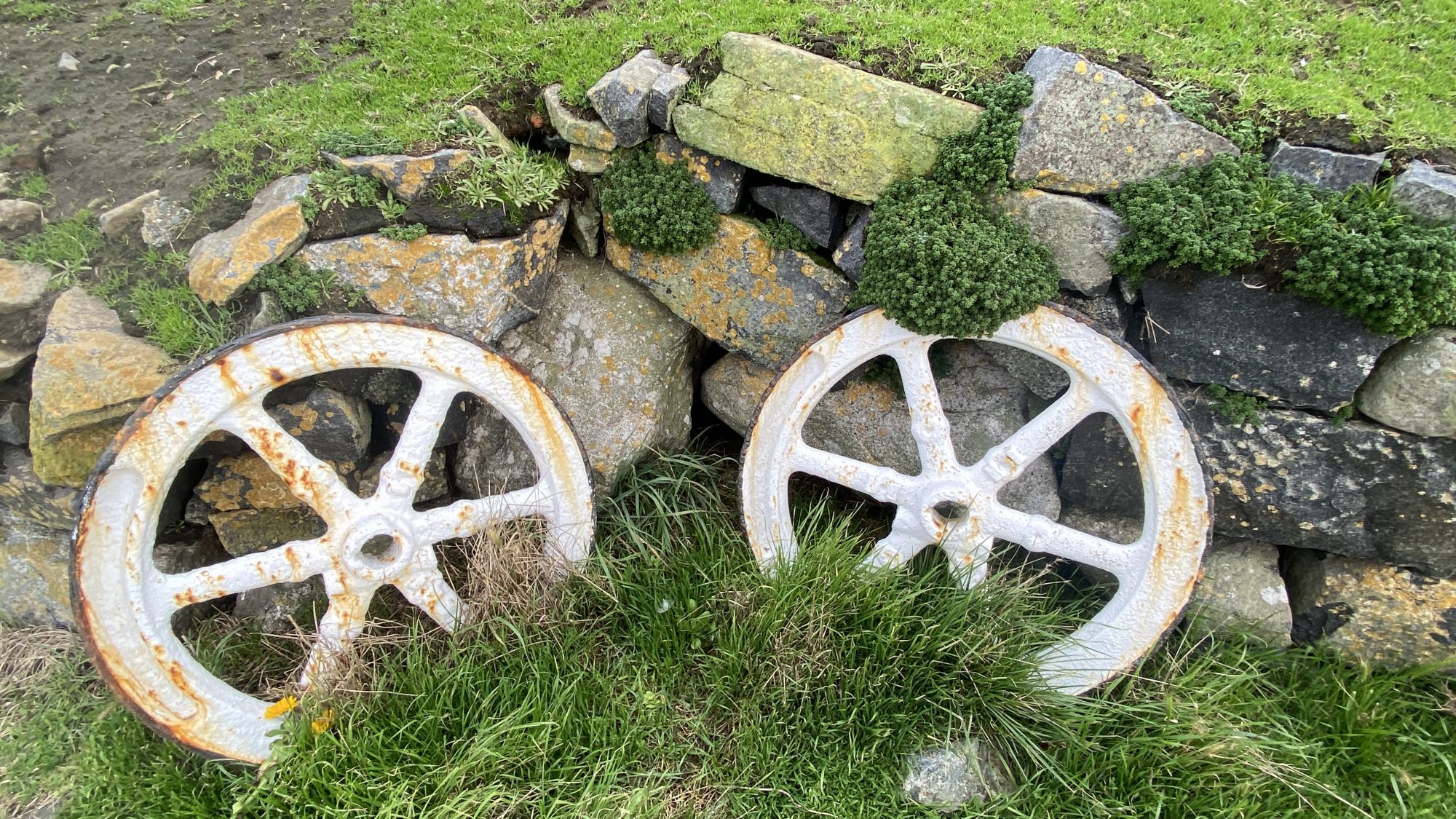 At one time the area under these artifacts was covered with bricks from the original engine room. The bricks are still there but they are now overgrown with grass. Removal of the overburden would improve the appearance of the area.
At one time the area under these artifacts was covered with bricks from the original engine room. The bricks are still there but they are now overgrown with grass. Removal of the overburden would improve the appearance of the area.
Revisiting Intertidal Transect sites at Race Rocks
Watden’s Report, September 3, 2021
I was fortunate to be able to get out to Race Rocks on one of the last morning low tides of the season. I wanted to revisit intertidal locations around the island in order to take photos of belt transects in locations I had recorded with baseline studies back in May of 1995. Photographic transects are valuable records in the event of changes that may happen along coastlines, usually caused by humans and/or by extreme weather events .
Images taken in 1995 can be seen in this index on transects: https://racerocks.ca/ecology/ecological-monitoring/
The belt transect files with images will be linked here when they have been processed :
Peg 6 Peg5: Peg 5a Peg 5b Peg 14a, Peg 14b Peg 115.
I was fortunate to have the assistance of Cedric Torres, the ecoguardian in doing the work on the transects.
At this time of year the island is populated by many young glaucous-winged gulls, some fully fledged and other son various states of maturity. There were also a number of mortalities around the island which is typical for this time of year in a breeding colony. In the following videos a number of behaviours of the chicks are shown .
Harbour seals with pups are hauled out on the southern most reef, note the current was still ebbing in this video.
The California and Stellers sea lions have started coming back in large numbers. typically the Californias outnumber the Stelllers at this time of year.
Beneath the tower, the Californians( barking) are predominant: but there is alos a mix of the growling Stellers.
On the East side cove a large group of Californian Sea lions were hauled out. The ones here were very skittish, any movement near the east end of the house would startle them
.
Other observations : two orcas in Race Passage ( surprizingly with no whale watching boats nearby. The nice weather on Sept 3 brought out many whale watching boats and as usual they approach closer to the north side in front of the docks than necessary and well within the distance for viewing marine mammal colonies. The sea lions on that side are more habituated to the presence of humans and these boats than on other parts of the island, but many still go into an alert stage when the boats pass by.
Only a few pelagic cormorants were seen on the south west tip of the island.
The Calendula escapes from gardens of lightkeepers over 50 years ago still exist along the pathways, although the dry summer has been challenging. I was able to make a new species observation of these green blow flies on the flowers.
This summer with the heat dome experience on Vancouver Island there have been reports of damage to intertidal life. I took these images of high intertidal level barnacles in the arintertidal between peg 14 and 15. which show very little damage from this event,
We checked out Anita’s pool #6 . The intertidal life in the area has been unchanged for decades.
On the west side of the cliff near peg 5 , we took these images on the vertical rock face as records of barnacle distribution:
And near peg 15 we noted these finger limpets in a shaded rock at an extreme high intertidal elevation.
- Note peg 15 in upper part of photo
- Finger Limpets
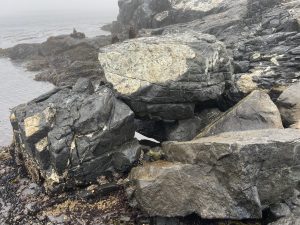
And a follow-up photo of The ill-fated tidepool #13 which was readjusted in the hurricane of 2006
Elephant Seal Bubbles
This was my first full day at Race Rocks and it started with a fog check at 5 am. One of the volunteers from nearby Rocky Point Bird Observatory was interested in doing a simultaneous comparative seawatch from Beechey Head and Race Rocks to determine if the birds leaving Beechey also passed Race, and if so, how long it took. The weather was clear, and the challenge was on! But there was a glitch. Nothing was passing Race Rocks, as there was a sea full of krill and to the west. I climbed the tower to do my watch, and found about 600 California Gulls already in the reserve picking at the krill near the water’s surface. The few alcids that made it here during the one hour watch (from 6:30-7:30) quickly set down rather than flying through. Most (if not all) of the birds Daniel counted at Beechey Head were not counted here. We’ll try again.
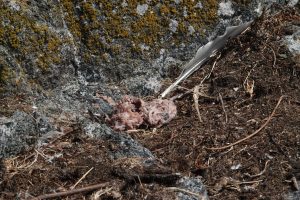
Regurgitated krill
On a more entertaining note, the Elephant Seal went for a stroll today, all the way to the dock. I looked out the window at about 12:30, and there he wasn’t. I ran out to see if he was really gone. Whew! Not yet!
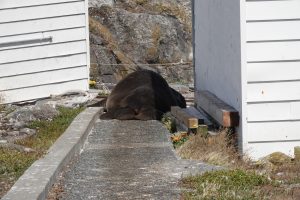
He was working his way to the dock.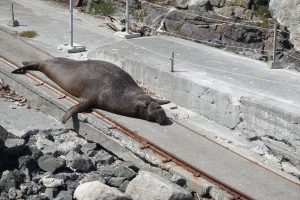
And eventually got to the water’s edge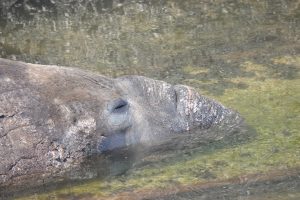 where he proceeded to stick his face in the water and blow bubbles. How exciting!! If you’d like to see some videos of this event, click here. (By the way, I am using a 600mm lens and keeping my distance!)
where he proceeded to stick his face in the water and blow bubbles. How exciting!! If you’d like to see some videos of this event, click here. (By the way, I am using a 600mm lens and keeping my distance!)
I was thrilled! I thought it meant that he was on his way and could start eating again. Several wildlife watching vessels came by and were delighted to see him. But apparently, this is a daily sojourn for him. Sure enough, as Greg Dickinson predicted, he returned to his resting spot after his trip to the beach! Looks like he’s not done yet.
Ecological Notes:
1 Humpback Whale

Distant Humpback
1 Elephant Seal
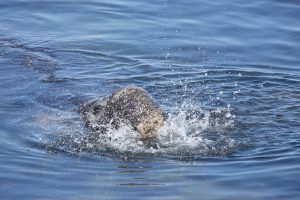
6+ California Sea Lion
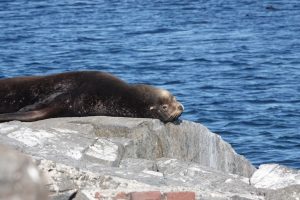
15+ Steller Sea Lion
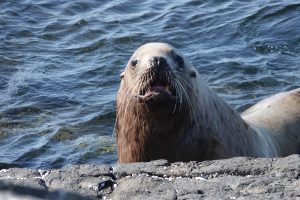
80+ Harbour Seal
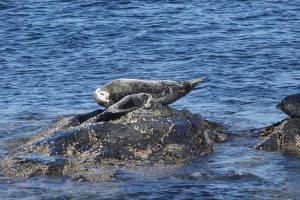
1 Feral Pigeon (Rock Pigeon) flew over while I was washing windows
1 Anna’s Hummingbird
2 Killdeer
6 Black Oystercatcher
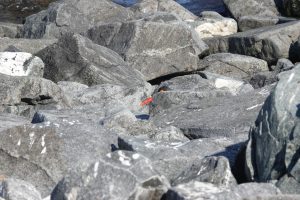
It’s difficult to hide with a bright orange bill.
25 Black Turnstone
5 Least Sandpiper
18 Common Murre
80 Pigeon Guillemot

4 Rhinoceros Auklet
600 California Gull (feeding on krill at first light)
200 Glaucous-winged Gull
1 Heermann’s Gull
3 Pelagic Cormorant
4 Double-crested Cormorant
Facility Work: Washed all the windows and solar panels
Vessel Traffic: Eco-tourism boats all day, sometimes as many as 3 in the reserve at once. Estimate about 20 vessels. Only saw one private fishing boat in the reserve.
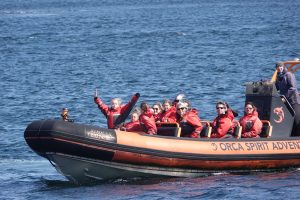
Weather – Current: http://www.victoriaweather.ca/current.php?id=72
Weather – Past: http://www.victoriaweather.ca/station.php?
Elephant Seals From the Remote Control Camera
This year, so far there has been a very successful set of births of Elephant seals at Race Rocks. This is the 13th year that Elephant seals have been breeding and having births in the ecological reserve. Currently three females and four pups along with a large male can be seen from the remote-controlled camera 1 from the top of the tower:
Humpback Whales Feeding off Race Rocks
There has been 2 humpbacks hanging around the Becher Bay – Race Passage for the last couple of weeks. They have always been a little bit distant from the Lighthouse, but on December 30th 2020 they came right up to the SW corner of the lighthouse and did some feeding right at the current line. There’s lots of turbulence, so it could be some bubblenetting or lungefeeding. Really cool to see them use the crazy currents around Race Rocks to get a meal in.
Elephant Seal Pup Growth – Day by day
The first Elephant Seal pup of the 2021 birthing season came on December 22 2020, and began it’s 23 days of nursing the day after (it took him awhile to figure out how to nurse). Elephant seal pups only have a couple of weeks to get big enough and healthy enough to survive alone after their moms wean them and abandon them on Race Rocks; which means their life is essentially just to feed, nap, and snuggle with their moms. It’s hard to show how impressive it is to see how fast they put on weight, with the pup doubling in size over the first few days. Here’s a video of the growth of ‘Cheermeister’ over his first 12 days of life.
https://youtu.be/ltMsnNRYTmU
Also see other posts on elephant seal pups born at Race Rocks, the most northerly pupping colony for e-seals on the Pacific coast: https://www.racerocks.ca/tag/pup/
Plastic band removed from neck of Greater Victoria sea lion
From The Goldstream Gazette 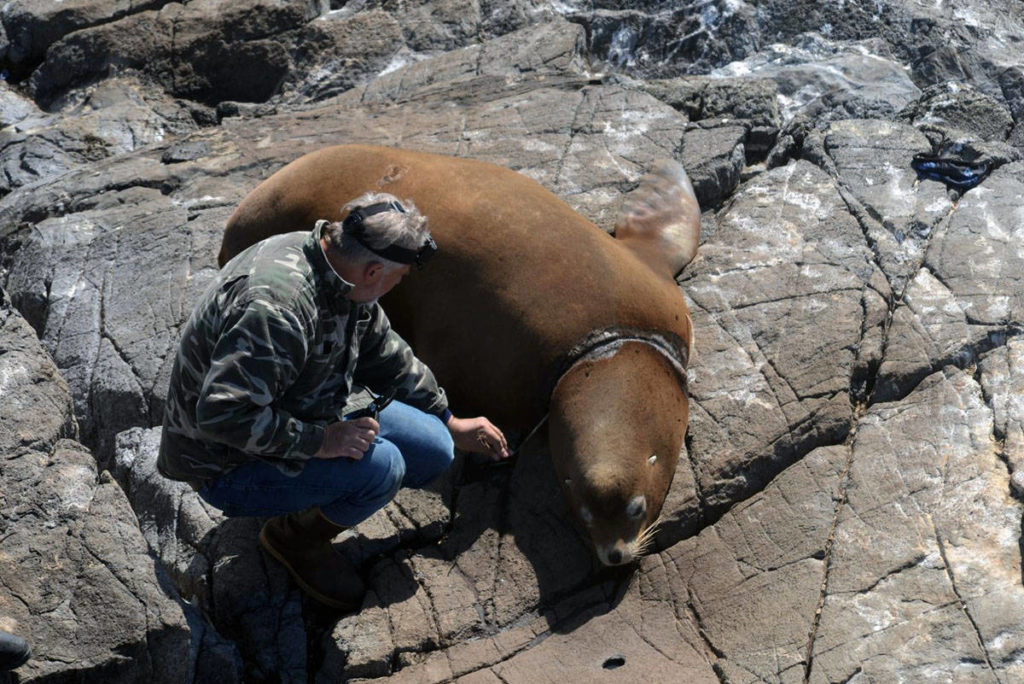 A Marine Mammal Rescue Centre veterinarian removes a plastic packing band from the neck of a Stellar’s sea lion at the Race Rocks Ecological Reserve on Sept. 10. (Courtesy of Mara Radawetz)
A Marine Mammal Rescue Centre veterinarian removes a plastic packing band from the neck of a Stellar’s sea lion at the Race Rocks Ecological Reserve on Sept. 10. (Courtesy of Mara Radawetz)
Plastic band removed from neck of Greater Victoria sea lion
Entanglement injuries in seals and sea lions a regular occurrence at Race Rocks Ecological Reserve
A sea lion trapped in human garbage has a second chance at life thanks to the sharp eye of a lighthouse-dwelling ‘ecoguardian’ at Race Rocks Ecological Reserve near Metchosin.
Mara Radawetz and Kai Westby, who live in the island’s lighthouse tower and monitor the reserve on behalf of Pearson College, called in back-up support when Radawetz spotted a California sea lion with a plastic packing band tightly bound around its neck on Sept. 1.
Over the days that followed, the duo spotted the animal again and watched it expressing clear discomfort as a result of the appendage.
“We could see that it was suffering, he would continually scratch at the infected area on his neck,” Westby said. “It had cut through his skin and created a kind of swollen, wet wound.”
The Marine Mammal Rescue Centre (MMRC), assisted by the Department of Fisheries and Oceans, responded to the call for help, but it would be a few days before the rescue could arrive by boat.
Fortunately, the rescue team arrived Sept. 10 and Radawetz was able to again spot the injured sea lion using a high-powered magnification lens from the top of the lighthouse, where the duo does a daily count of the island’s furry, feathered and blubbery visitors, which typically number in the thousands.
READ ALSO: Sooke Whale Watching spots a huge gathering of whales
“Being able to have that eye in the sky was instrumental in being able to successfully help this animal,” Westby said.
With a bird’s eye view, the pair guided MMRC veterinarian Martin Haulena to an area where he could prepare a dart gun with a tranquillizer. Rescue staff aided from the water and land, watching as Haulena crawled over the rocks and got into position, successfully tranquillizing the sea lion.
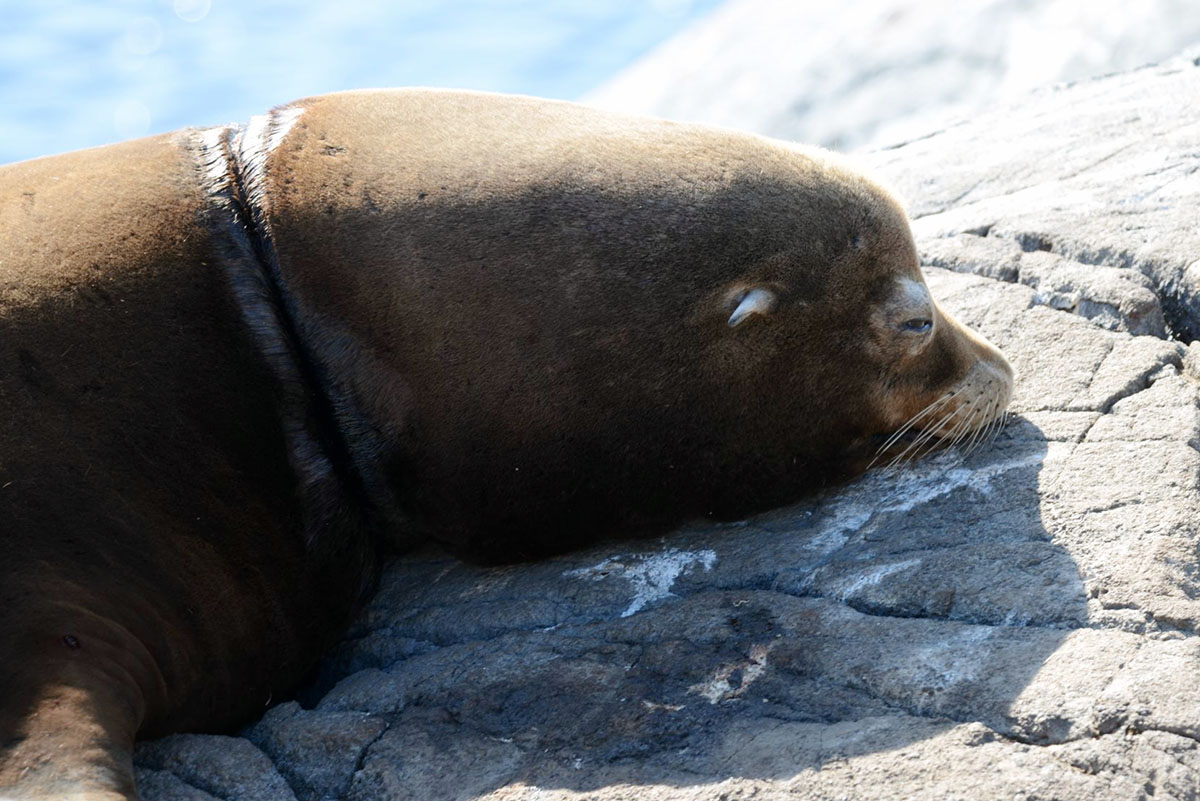 A sea lion that had a plastic band removed from its neck at the Race Rocks Ecological Reserve wakes up from sedation.(Courtesy of Mara Radawetz)
A sea lion that had a plastic band removed from its neck at the Race Rocks Ecological Reserve wakes up from sedation.(Courtesy of Mara Radawetz)
In addition to removing the plastic band, the vet installed a tracking device and took a blood sample.
Radawetz and Westby said they see a sea lion or harbour seal with an injury due to human impact roughly once a week – and many of those animals don’t have a happy ending.
“We often see not only plastic entanglements but fishing line injuries on the sea lions and the harbour seals,” Radwetz said. The pair said they often see pinnipeds – seals, sea lions and walruses – that have swallowed a fish still on a fishing line, a meal that can cost the animal its life.
“It’s not always possible for us to help them,” Radawetz said.
While one lucky sea lion was able to swim free, Westby and Radawetz hope the incident resonates with people.
Westby added, “I really hope by sharing some of what we see here we can remind people that their actions have impacts and we are seeing those impacts here in Race Rock.”
In September 2019, a sea lion with almost identical injuries was rescued at the Race Rock Ecological Reserve. That animal had a plastic band embedded roughly two inches into its neck.
For more news from Vancouver Island and beyond delivered daily into your inbox, please click here.
READ ALSO: Steller sea lion with plastic around neck rescued on Vancouver Island
Returning Sun, Census
Weather:
- Visibility 15-20 NM
- Sky partly cloudy clearing to blue sky
- Wind 15-20 Knots W
- Sea state: calm, rippled
Visitors/Marine Traffic:
- No visitors
- Yesterday we spotted a group of kayakers who had emailed to let us know they were coming: We tried to wave, but you were too far away to see us- hope you had a good paddle!
Ecological:
- The seagull population has skyrocketed this week, but still no fully constructed nests
- The elephant seals have left now, aside from one. We anticipate that we may see a few large males in a month or so.
Census:
- 16 Geese
- 8 Oystercatchers
- 39 Sea Lions
- 40 Harbor Seals
- 1 Elephant Seal
- 1 Bald Eagle
- 580 Seagulls
- 42 Pigeon Guillemots
- Lots of greenery filling in
- Sunset from lighthouse
- Some wider shots to break up the closer ones we typically post (guest house)
Tagged Elephant Seal Resight Histories
The following resight histories were provided by Dr. Patrick Robinson, Director of Año Nuevo Reserve in California. The five elephant seals listed are presently at Race Rocks.
| Animal: 48288, tags: GD019R-iu-So,GD018L-ol-So | |||||||||||||
| Season 2017 | |||||||||||||
| OrigTag | Age | AnimalID | ResightID | Date | Area | Tags Read | Comment | TagComm | MarkComm | Age | Sex | Mlt | Observer |
| GD019 | 0 | 48288 | 297540 | 2017-02-01 | AP | P | UK | C. Casey | |||||
| GD019 | 0 | 48288 | 298632 | 2017-02-09 | BBS | W | B. McDonald | ||||||
| GD019 | 0 | 48288 | 298988 | 2017-02-11 | BBS | W | M | P. Morris | |||||
| GD019 | 0 | 48288 | 299787 | 2017-02-15 | BBSU | W | M | P. Morris | |||||
| GD019 | 0 | 48288 | 301742 | 2017-02-23 | BBS | GD019R-iu-So,GD018L-ol-So | THIS IS THE SECOND 30C, THE FIRST ONE WAS WEIGHED AT NP | W | M | 5 | C. Nasr | ||
| Season 2019 | |||||||||||||
| OrigTag | Age | AnimalID | ResightID | Date | Area | Tags Read | Comment | TagComm | MarkComm | Age | Sex | Mlt | Observer |
| GD019 | 1 | 48288 | 330944 | 2018-04-19 | Race Rocks, B.C. Canada | GD018 | Observed by Laas Parnell | juv | other | ||||
| GD019 | 2 | 48288 | 330943 | 2019-04-09 | Race Rocks, B.C. Canada | GD018 | Observed by Laas Parnell | juv | other | ||||
| Season 2020 | |||||||||||||
| OrigTag | Age | AnimalID | ResightID | Date | Area | Tags Read | Comment | TagComm | MarkComm | Age | Sex | Mlt | Observer |
| GD019 | 3 | 48288 | 335337 | 2019-12-14 | Race Rocks, B.C. Canada | GD018 | Observed by Laas Parnell | juv | other | ||||
| GD019 | 3 | 48288 | 335420 | 2019-12-29 | Race Rocks, B.C. Canada | GD019R,GD018L-ol-So | reported by Nick Townley (eco-guardian) | juv | other | ||||
| GD019 | 3 | 48288 | 347129 | 2020-04-01 | Race Rocks, B.C. Canada | GD018L-ol-So,GD019R-i | Observed by Race Rocks ecoguardian Nick Townley and confirmed with photo. Seal is in great body condition but fur/skin is in poor condition. | SA1 | M | other | |||
| GD019 | 3 | 48288 | 347638 | 2020-04-12 | Race Rocks, B.C. Canada | GD018,GD019 | Observed by Nick Townley (Race Rocks Ecoguardian) | juv | 0 | other | |||
| Animal: 49134, tags: GE103R-ou,GE135R-il-si | |||||||||||||
| Season 2018 | |||||||||||||
| OrigTag | Age | AnimalID | ResightID | Date | Area | Tags Read | Comment | TagComm | MarkComm | Age | Sex | Mlt | Observer |
| GE103 | 0 | 49134 | 313030 | 2018-02-05 | NP0N | With G7644, Card # 548, but not her original pup. It was raised jointly by G9454 and G7644 after G7644 lost her own pup. | P | P. Morris | |||||
| GE103 | 0 | 49134 | 313518 | 2018-02-06 | NP0N | Is with female 9454 but female 7644 is squabbling with her trying to reach the pup. This is a separate pup from the one marked 76 on LSh. | Also has 2 blotches on top of its shoulders, | P | P. Morris | ||||
| GE103 | 0 | 49134 | 314153 | 2018-02-09 | NP1 | nursing from female 9454 but 7644 was near | P | P. Robinson | |||||
| GE103 | 0 | 49134 | 314987 | 2018-02-13 | NP0 | With Female G7644, Card # 548. It remains to be seen if this is the same pup that is marked 644 L and blotches on top of its shoulder. | 6 is backwards, mark almost on ventral side | P | T. Keates | ||||
| GE103 | 0 | 49134 | 315582 | 2018-02-15 | NP0 | looks like it could be with either G7466 or G9454 | P | R. Holser | |||||
| GE103 | 0 | 49134 | 316021 | 2018-02-17 | NPG0 | This is FOR SURE the pup of 9454 and not 7644. The pup of 7644 is 76. This is one of my study pups that has been adopted by 7644. | W | J. Linossier | |||||
| GE103 | 0 | 49134 | 316052 | 2018-02-19 | NP | GE103R-ou | One of Juliette Linossier’s study animals | W | C. Casey | ||||
| GE103 | 0 | 49134 | 316341 | 2018-02-20 | NP0S | also 644 L | W | F | P. Morris | ||||
| GE103 | 0 | 49134 | 316497 | 2018-02-22 | NP | GE103L-ou-So | also has 476? on belly | W | T. Keates | ||||
| GE103 | 0 | 49134 | 316665 | 2018-02-23 | NP | GE103R-ou-Si | Noticed marks on L and R, but could not read them. | W | R. Cuthbertson | ||||
| GE103 | 0 | 49134 | 316693 | 2018-02-23 | NP | GE135R-il-si,GE103L-ou-si | Juiliette study animal. genetic sample AF00375791 | database has disagreement on placement of GE103 | also 476 on the right and the 6 is backwards | W | F | 25 | L. Johansen |
| Season 2019 | |||||||||||||
| OrigTag | Age | AnimalID | ResightID | Date | Area | Tags Read | Comment | TagComm | MarkComm | Age | Sex | Mlt | Observer |
| GE103 | 0 | 49134 | 318448 | 2018-04-17 | BBSL | GE135R,GE103L-ou-Si | W | 100 | Robinson class | ||||
| GE103 | 0 | 49134 | 318974 | 2018-04-17 | BMB | GE103L-ou-Si,GE135R-il-Si | Cathy Debier 4x blubber biopsy | original tag location for GE103 was incorrect | W | F | 100 | P. Robinson | |
| Season 2020 | |||||||||||||
| OrigTag | Age | AnimalID | ResightID | Date | Area | Tags Read | Comment | TagComm | MarkComm | Age | Sex | Mlt | Observer |
| GE103 | 2 | 49134 | 334454 | 2019-09-07 | Race Rocks, B.C. Canada | GE103L-ou | Observed by Mara Radawetz @ Race Rocks Colony Confirmed by photograph. Seal looks healthy and in good body condition | juv | other | ||||
| GE103 | 2 | 49134 | 334574 | 2019-10-01 | Race Rocks, B.C. Canada | GE103 | reported by Laas Parnell | juv | other | ||||
| GE103 | 2 | 49134 | 334575 | 2019-10-11 | Race Rocks, B.C. Canada | GE103 | juv | F | other | ||||
| GE103 | 2 | 49134 | 346669 | 2020-03-23 | Race Rocks, B.C. Canada | GE103L-ou,GE135R-il | reported by Nick Townley and confirmed with photo | juv | 0 | other | |||
| GE103 | 2 | 49134 | 347639 | 2020-04-12 | Race Rocks, B.C. Canada | GE103,GE135 | Observed by Nick Townley (Race Rocks Ecoguardian) | juv | 0 | other | |||
| Animal: 52226, tags: | |||||||||||||
| Season 2020 | |||||||||||||
| OrigTag | Age | AnimalID | ResightID | Date | Area | Tags Read | Comment | TagComm | MarkComm | Age | Sex | Mlt | Observer |
| 52226 | 346670 | 2020-03-23 | Race Rocks, B.C. Canada | PT563,PT562 | reported by Nick Townley and confirmed with photo | ad | F | 0 | other | ||||
| Season 2021 | |||||||||||||
| OrigTag | Age | AnimalID | ResightID | Date | Area | Tags Read | Comment | TagComm | MarkComm | Age | Sex | Mlt | Observer |
| 52226 | 347640 | 2020-04-12 | Race Rocks, B.C. Canada | PT562,PT563 | Observed by Nick Townley (Race Rocks Ecoguardian) | ad | F | 100 | other | ||||
| Animal: 50727, tags: GE779R-iu-so,GG512L-ol-si | |||||||||||||
| Season 2019 | |||||||||||||
| OrigTag | Age | AnimalID | ResightID | Date | Area | Tags Read | Comment | TagComm | MarkComm | Age | Sex | Mlt | Observer |
| GE779 | 0 | 50727 | 329337 | 2019-02-20 | NP3 | P | C. Casey | ||||||
| GE779 | 0 | 50727 | 329365 | 2019-02-23 | NP3 | W | M. Emard | ||||||
| GE779 | 0 | 50727 | 329392 | 2019-02-23 | NP3 | GE779R-iu-so | W | P. Robinson | |||||
| GE779 | 0 | 50727 | 329711 | 2019-02-24 | NPG3 | W | E Levy | ||||||
| Season 2020 | |||||||||||||
| OrigTag | Age | AnimalID | ResightID | Date | Area | Tags Read | Comment | TagComm | MarkComm | Age | Sex | Mlt | Observer |
| GE779 | 0 | 50727 | 330651 | 2019-03-12 | NPD | GG512L-ol-si,GE779R-iu-so | W | M | 99 | P.Robinson | |||
| GE779 | 1 | 50727 | 347641 | 2020-04-12 | Race Rocks, B.C. Canada | GG512R,GE779L | Observed by Nick Townley (Race Rocks Ecoguardian) | juv | other | ||||
| Animal: 48066, tags: GC887R-iu-So | |||||||||||||
| Season 2017 | |||||||||||||
| OrigTag | Age | AnimalID | ResightID | Date | Area | Tags Read | Comment | TagComm | MarkComm | Age | Sex | Mlt | Observer |
| GC887 | 0 | 48066 | 298641 | 2017-02-09 | BMC | P | B. McDonald | ||||||
| GC887 | 0 | 48066 | 298732 | 2017-02-10 | BMS | W | T. Barclay | ||||||
| GC887 | 0 | 48066 | 298955 | 2017-02-11 | BMC | P | P. Morris | ||||||
| GC887 | 0 | 48066 | 299024 | 2017-02-12 | BMS | P | M. Voisinet | ||||||
| GC887 | 0 | 48066 | 300206 | 2017-02-21 | BMN | W | T. Russell | ||||||
| GC887 | 0 | 48066 | 300244 | 2017-02-21 | BMC | W | E Levy | ||||||
| GC887 | 0 | 48066 | 300257 | 2017-02-21 | BMC | GC887R-iu-So | W | R. Holser | |||||
| GC887 | 0 | 48066 | 300557 | 2017-02-22 | BMC | W | P. Morris | ||||||
| GC887 | 0 | 48066 | 302743 | 2017-03-10 | BBNS | GC887R | W | P. Morris | |||||
| Season 2019 | |||||||||||||
| OrigTag | Age | AnimalID | ResightID | Date | Area | Tags Read | Comment | TagComm | MarkComm | Age | Sex | Mlt | Observer |
| GC887 | 2 | 48066 | 330772 | 2019-03-26 | Race Rocks, B.C. Canada | GC887R-iu-So | Also reported present at Race Rocks in December 2017 and December 2018. | juv | M | other | |||
| Season 2020 | |||||||||||||
| OrigTag | Age | AnimalID | ResightID | Date | Area | Tags Read | Comment | TagComm | MarkComm | Age | Sex | Mlt | Observer |
| GC887 | 3 | 48066 | 335252 | 2019-12-07 | Race Rocks, B.C. Canada | GC887 | juv | M | other | ||||
| GC887 | 3 | 48066 | 347642 | 2020-04-12 | Race Rocks, B.C. Canada | GC887R | Observed by Nick Townley (Race Rocks Ecoguardian) | M | other |


